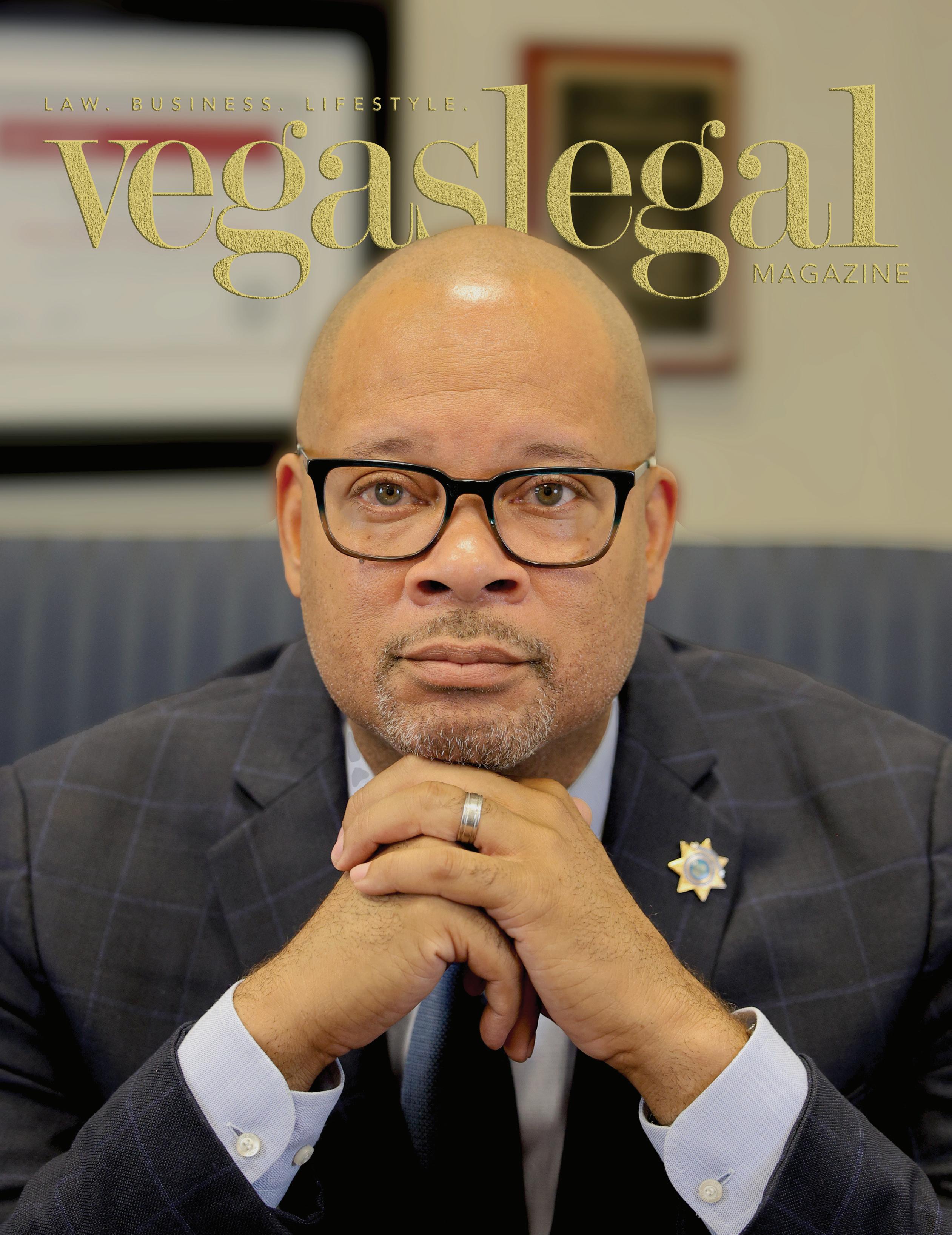
Nevada AG Aaron Ford Focused on Serving the State Now; Stays Mum on His Future Plans Volume 8 Issue 6 Oakland A’s Plan Move to Las Vegas Strip FORMULA 1 A Quick Look at the Fastest Race in the World
EDITOR IN CHIEF

PRESTON P. REZAEE, ESQ.
PUBLISHER
TYLER MORGAN, ESQ.
DIRECTOR OF OPERATIONS
JEFFRY COLLINS, ESQ.
MARKETING
DIANA COLLINS
CREATIVE DIRECTOR
BRANDON PIERCE
ADVERTISING
INFO@VEGASLEGALMAGAZINE.COM

CALL 702-222-3476
CONTRIBUTORS
ADAM D. KEMPER, ESQ.
MARK FIERRO
JEFF HANEY
VALERIE MILLER
MARK MARTIAK
DONOVAN THIESSEN, CPA
DON LOGAY
MYRON MARTIN
ANDREW CASH, M.D.
DAN HERRERA
JEFFRY COLLINS, ESQ.
31 COVER STORY:
NEVADA AG AARON FORD




LAW 12 | COURT OF PUBLIC OPINION 17 | MEET THE INCUMBENT: JUDGE CARLI KIERNY 20 | FROM PUBLIC DEFENDER TO SPEAKER OF THE NEVADA ASSEMBLY: STEVE YEAGER 30 | COVER STORY: NEVADA AG AARON FORD BUSINESS 42 | STATE OF THE MARKET 46 | MORTGAGE RATES RISE WITH THE SUMMER HEAT 50 | OAKLAND A’S PLAN MOVE TO THE STRIP 52 | Q&A WITH THE OAKLAND ATHLETICS 54 | STEVE WYNN SETTLEMENT 60 | INFLATION REDUCTION ACT 66 | SEC V RIPPLE INC. LIFESTYLE 74 | FORMULA 1 80 | THE SMITH CENTER 82 | VEGAS FIRSTS 88 | WHEN TO SEEK ORTHOPEDIC CARE 91 | HUMOR 42 74 Contents COPO STATE OF THE MARKET FORMULA 1 12 West Harmon Zone / Courtesy F1 Las Vegas Grand Prix
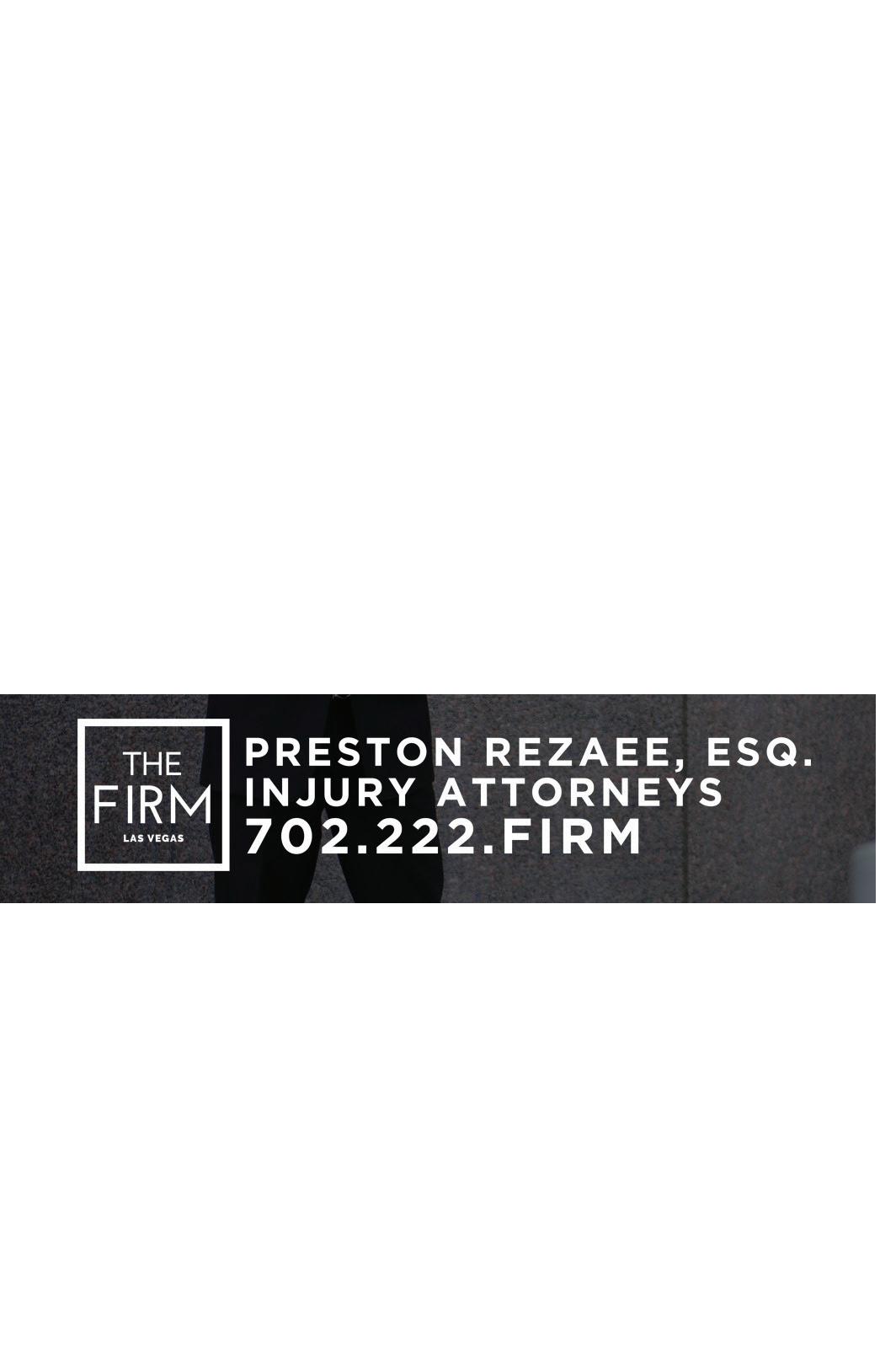
THE EDITOR
Welcome to another compelling issue of Vegas Legal Magazine, where we delve into the nexus of law, business, and lifestyle in the heart of the Silver State. This issue is packed with insights, interviews, and investigations that offer a multifaceted perspective on the evolving narrative of our dynamic community.
In the law section, we turn the spotlight on Attorney General Aaron Ford. Our cover story explores his journey from humble beginnings to becoming one of the most influential legal minds in Nevada. We go in-depth to examine his roles, challenges, and the ground-breaking cases that have marked his tenure. This is an exclusive look into the life and mindset of a public servant who has an enormous impact on our legal framework.
Switching gears to our business section, the talk of the town has been about the Oakland A’s and their proposed move to Las Vegas. This is not just a sports story; it’s a business saga that could reshape the economic landscape of our city. Our feature outlines what this move means for local businesses, taxpayers, and of course, baseball fans. We’ve got expert commentary on the potential legal hurdles and economic incentives that are part of such a monumental shift.
Steve Wynn, a name synonymous with Las Vegas, finds focus in our business segment as well. You might think you know all there is to know about Wynn’s gaming empire, but our investigative piece uncovers facets of his career that have seldom been discussed. How did he revolutionize the casino industry, and what is his lasting legacy? Find out in this issue.
Beyond these highlights, we continue to bring you timely updates, op-eds, and features that touch on the core issues that matter to our readership. Whether you are a legal scholar, a business mogul, or someone interested in the kaleidoscopic lifestyle that Vegas offers, we have something for you.

We are committed to offering a platform that is as diverse and vibrant as the community we serve. As we navigate the complexities of our modern world, it’s crucial to have a nuanced understanding of the changing scenarios in law, business, and lifestyle. And that’s what we strive to provide.
Your support makes this all possible. We invite you to engage with us, share your thoughts, and be a part of this ongoing conversation. Thank you for being a valued member of our Vegas Legal Magazine community.

FROM
LETTER
VEGASLEGALMAGAZINE.COM | 5

PUBLISHER

Welcome to the latest edition of Vegas Legal Magazine, the premium source for law, business, and lifestyle insights in the vibrant city of Las Vegas and beyond. In this issue, we bring you a medley of thought-provoking and informative features, interviews, and analyses that not only inspire but also challenge the status quo.
In our law section, we’re excited to present an exclusive interview with Judge Carli Kierny, a powerhouse of legal acumen and intellect who has been reshaping the justice system in Nevada. Kierny’s progressive stance on restorative justice has caught the attention of both supporters and critics alike, and our deep-dive into her philosophy and career promises to stimulate compelling conversations.
Joining Judge Kierny is a profile of Steve Yeager, Speaker of the Nevada Assembly. His tenacious efforts on criminal justice reform and his unyielding commitment to a balanced budget have been noteworthy. In our feature, Yeager opens up about the road ahead for Nevada, highlighting the challenges and opportunities that lie in the legislative landscape.
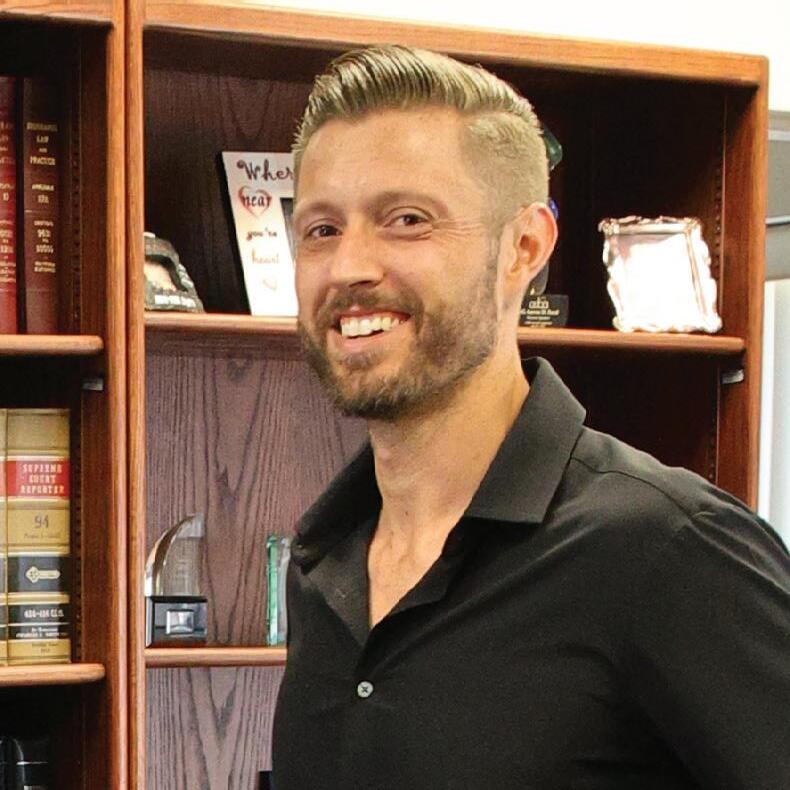
Switching gears to business, we delve into the ever-dynamic Las Vegas real estate market. With the city becoming a buzzing hub for businesses and residential purposes, our experts weigh in on what to expect in the coming months, especially in a post-pandemic world. Will the skyrocketing prices sustain? How are policies likely to adapt? We tackle these questions and more.
Cryptocurrency has become an undeniable force in global finance, and Nevada is no exception. As lawmakers and business leaders discuss potential regulations and their impact, our feature on the future of cryptocurrency regulations aims to demystify the jargon and offer clear, actionable insights. Whether you’re an investor, an entrepreneur, or someone merely curious, this piece is designed to enlighten you on where we’re heading in this brave new digital world.
No issue of Vegas Legal Magazine would be complete without a glance at lifestyle, and we have a couple of very special pieces for you this time around. First, we offer you a curated list of ‘Vegas Firsts’—the trailblazers, the visionaries, and the monuments that have contributed to making Las Vegas the iconic city it is today.
Finally, hold onto your hats because FORMULA 1 racing is coming to Las Vegas! We take you behind the scenes, sharing the thrills and spills in the world of F1 racing and what this means for the city. Whether you are a motorsport fan or not, the excitement is contagious, and the economic implications for Las Vegas are substantial.
Thank you for choosing Vegas Legal Magazine as your trusted source of information and perspectives. We strive to live up to your expectations in delivering the quality and breadth of content you deserve. Your continued readership and support fuel our commitment to excellence.
VEGASLEGALMAGAZINE.COM | 7
LETTER FROM THE
ABOUT US
First Legal is the first comprehensive File Thru Trial™ solutions firm For over 30 years, we have offered a streamlined experience with fast turnaround.




Our five divisions work together to tackle every assignment with precision and excellence.

YOU CAN TRUST!
FILE THRU TRIAL™
INVESTIGATIONS RECORDS DIGITAL Skip Trace Surveillance & Sub Rosa Difficult Service of Process Subpoena & Authorization Services Document Management Deposition Officer Services Scanning & Copying eDiscovery Data Processing & Review Get in touch | 702.671.4002 | www.firstlegal.com | info@firstlegal.com COURT & PROCESS Court Filing Research Service of Process First Legal simplifies the litigation process from File Thru Trial™
the beginning to end of the litigation process or at any point in between, we are here for you.
broad range of services
simplify your workload. DEPOSITIONS Court Reporting Legal Videography Trial Services CA PI: 24171, AZ PI: 1551710, NV LICENSE: NV PI-PS: 1452, FIRM NO: 094F
From
Our
help




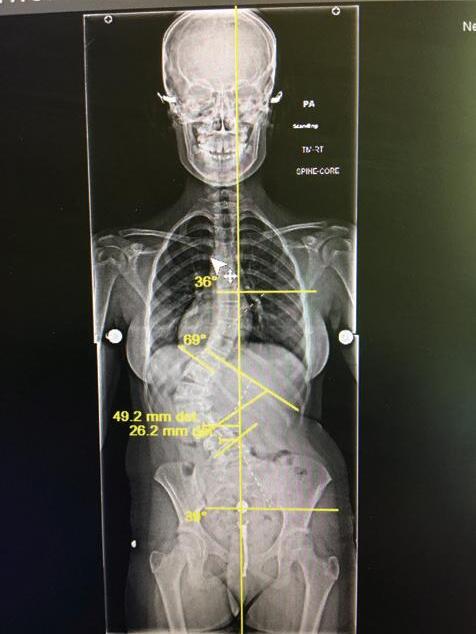
LAW

law is reason free from passion.” – Baruch Spinoza

“The
COURT OF PUBLIC OPINION
By Mark Fierro and Jeff Haney
It started with a brisk spring evening walk — just a quick walk around the neighborhood in what seems like a very safe community. On the night of April 14, 2022, Maria Cervantes Alvarado took her usual brisk walking trip around the community in Rhodes Ranch. She got to a familiar intersection, entered the same crosswalk that she always passes — but this time when she entered the crosswalk there was a car sitting at the stop sign.
As Maria walked past, the car suddenly accelerated, striking the 41-year-old mother of three and knocking her more than 20 feet. The blow was hard enough to crack the bumper and the lights on the car. Maria’s head struck the cement and asphalt hard enough to open

a nasty gash on her forehead. She sustained other injuries as well. This is the part that we have a pretty good understanding of, as police responded to the scene and filed a detailed report. They know that the driver started to pull away from the scene of the accident but neighbors yelled for him to stop.
Police officers who responded to the scene said that, in their estimation, the intersection “was limited in lighting,” according to the official report. As luck would have it, one of Maria’s friends happened by and recognized her. In the emotionally fraught discussion that followed, Maria asked her friend to tell her son that she was OK and that she would be home as soon as she could. That is not what transpired: Maria’s
12 | VEGASLEGALMAGAZINE.COM
friend brought her son to the accident scene, he was traumatized by what he saw, and he was further traumatized when his mother left the scene in an ambulance. It’s at this point that the crash goes from being just an accident with injuries to an incident with some real twists and turns.
With more than $100,000 in initial direct medical expense, Maria sought the help of an attorney and she reached out to the De Castroverde Law Group.

Albright is a former prosecutor with the Clark County District Attorney’s office. He knows his way around an accident with injury scene. What you are about to learn next is the real shocker, even for a veteran former DA prosecutor. An attorney for Rhodes Ranch explained that the Homeowners Association at Rhodes Ranch did not have insurance at the time of the accident. The HOA’s attorney said that for some reason the HOA had let their insurance lapse.
A point of disclosure here: Our firm, Fierro Communications, works with Albright and the De Castroverde Law Group on this case and we have some pretty strong feelings about the way the victim was treated by the HOA. This is where the story goes from bad to worse.
After suffering from fallout from her injuries for more than a year including recurring headaches and other medical issues, Maria was in for the surprise of her life when the lawsuit was filed on her behalf. Her name and the fact that she was suing was plastered all over the Rhodes Ranch clubhouse. It also ended up on various Rhodes Ranch social media outlets including Facebook and Nextdoor. On top of being bruised, sutured and battered, Maria was stunned. She started seeing nasty comments about her accident, particularly on social media, even though she was the victim here. Neighbors were complaining because their HOA rates could go up — HOA officials implied as much.
“As we dug a little deeper, we found out that, throughout the years, as you can imagine with a community of this size, there has been litigation from time to time, yet not once, in anything that I found, have they ever called an emergency board meeting or ever sent out a notice like this or posted such a notice in the community clubhouse areas,” Albright said. “Not once — let alone a notice that includes the actual name of an individual who lives in the neighborhood and rubs shoulders with those people, whose kids go to school with those people, with the same kids that also live in that neighborhood.”
Maria had contributed nothing in any way to cause this accident. The only thing she had to show for it was a handful of nearly insurmountable medical bills — yet HOA members were pointing the finger at her. She was understandably scared: Her neighbors know where she lives. Her children go to school
VEGASLEGALMAGAZINE.COM | 13
with children from the neighborhood. Both she and her husband work in the neighborhood.
“After the accident, I didn’t feel it was safe for my kids to run around or go outside,” Maria told us. “If what happened to me as an adult was happening, then what is going to happen to them, as kids? I don’t feel it’s safe for them to go out for a run or a walk at night, even though we live in the neighborhood. It is supposed to be a really nice and safe community, but we really don’t feel like that anymore.”
At a time in our country when ringing the wrong doorbell or pulling into the wrong driveway can change your life forever, HOA officials seemed to be pointing the finger at Maria at the worst possible time.
“What we’re trying to do is clean up their mess,” Albright said. “We want the people who have only seen the notice and think that it’s Maria’s fault to know the truth. We want them to know the facts behind the actual incident and that the lighting at the intersection was insufficient. We’ve had an engineer out there who says that the lighting on that corner was insufficient and not to code. That’s also the fault and the problem of the HOA.
“We also want them to know the extent of Maria’s injuries, to see the photos of her in the hospital with her neck braced and the gash in her head actively bleeding. It’s horrendous. We also need the people to know that they didn’t have insurance. Maria is not the villain in this story. What we’re trying to do is let her neighbors and her employers and the people who live by her, who may be blaming her, to know the truth.”
Orlando De Castroverde, a partner at De Castroverde Law Group, said he and his colleagues at the firm were shocked by what their investigation into the matter uncovered. “There was not sufficient lighting where Maria was hit,”
De Castroverde said. “That’s when we realized this accident was a result of those dangerous conditions. Then, with their messaging, the HOA flipped it and made Maria out to be the bad person, instead of acknowledging their responsibilities — then, on top of it, the fact they were not carrying insurance, which is a prerequisite. So the way I see it, there is a lot of irony in the way the HOA is going about it. The HOA is supposed to be protecting the residents of the community, not leaving them exposed to harm and damage.”
If there was any bright spot in the story, it was at this point that the Las Vegas ReviewJournal covered the story. Reporting by Katelyn Newberg seemed to bring some sanity to the online discussion. Follow-up social media posting included comments such as:
• “I am livid. Someone needs to be held accountable for allowing the liability insurance to lapse.”
• “Where is the [HOA board] president now with this possible lawsuit, which now allegedly adds bullying [of the victim] of all things?”
• “Time for a change, no more board members that don’t live in [Rhodes Ranch]. Also we need live, in-person meetings so we can hold everyone accountable.”
The need to blame seems to grow every day and the extensive role that social media plays in our lives makes the fuse of runaway emotion burn 1,000 times hotter. Maria didn’t do anything wrong. She was simply going out for a walk in her own neighborhood where she should have felt protected. Instead, Maria Cervantes Alvarado feels more victimized than ever.
Mark Fierro began his career as a reporter/ anchor at KLAS-TV, the CBS television station in Las Vegas. He worked at the U.S. House of Representatives in Washington, D.C. He served
14 | VEGASLEGALMAGAZINE.COM
as communications consultant on IPO road shows on Wall Street. He provided litigation support for the Michael Jackson death trial. He is president of Fierro Communications, Inc., which conducts mock juries and focus groups in addition to public relations and marketing. Fierro is the author of several books including “Road Rage: The Senseless Murder of Tammy Meyers.” He has made numerous appearances on national TV news programs.
Jeff Haney serves as Executive Vice President of Operations for Fierro Communications, where he works on developing and directing all media, marketing, research, consulting and public relations strategies for Fierro Communications’ clients including those in business, government, the legal field and cutting-edge high technology in Las Vegas.



Judge Carli Kierny MEET THE INCUMBENT
In this edition of Meet the Incumbent, we interview Judge Carli Kierny, department 2 of District Court.
Prior to taking the bench in department 2 of District Court, Judge Carli Kierny spent the last 10 years with the Clark County Public Defender’s Office, including five years on the sexual assault team. She served as the public defender representative on the countywide Criminal Justice Coordination Committee dedicated to improving probation outcomes. She began her legal career as a public defender in Champaign County, trying dozens of misdemeanor and felony cases. She also served as a volunteer with the SafeNest PS 417 program to provide resources to prevent lethal domestic violence incidents. As a law student, she tried several cases as a clerk with the Cook County Homicide Task Force and worked on the exoneration of a man who was wrongfully convicted as a student with the Chicago-Kent Law Clinic. Judge Kierny received a bachelor’s degree in communications from the University of Illinois at Urbana-Champaign, and a juris doctor degree from Chicago-Kent College of Law.
Vegas Legal Magazine: What does being a judge mean to you?


Judge Kierny: While I may be the judge elected to my seat, the courtroom still belongs to the people of Nevada and the litigants who appear in front of me. In order to not let those people down, I need to be prepared, work hard, follow the law, and make the best decisions possible with the information available to me at the time. Making literally hundreds of decisions a week means that sometimes I will get things wrong, and I need to stay humble enough to admit when that happened and fix my mistakes.
VLM: Why did you become a judge?
JK: At the time I ran, there were a lot of judges
who had practiced as either District Attorneys or civil practitioners representing companies. As a public defender, I had represented real people with serious problems, and I thought that was an important attribute to bring to the bench.
VLM: What has been the most memorable case you have presided over as a judge?
JK: When I started as a homicide judge, I had a case involving a former model who was accused of killing her much-older boyfriend. There was a lot of national media attention on the case, including Dateline, and every court date required a lot of planning for all the cameras and observers. That case taught me that everything changes when the cameras are on!
VLM: How do you exercise judicial discretion where there is ambiguity in legal authority?
JK: For example, how likely are you to sanction a litigant who violates a procedural rule, e.g. failing to file a document in a timely manner? I know I sound like a lawyer here, but it depends on the situation! If the violation caused prejudice to the opposing party, a sanction may be
appropriate. However, if there’s no real harm, I remember that we are all humans trying to do the best we can on any given day, and likely will not impose a sanction.
VLM: What was the most memorable case you tried as an attorney before taking the bench?
JK: As a young public defender, I tried a homicide case where the alleged victim’s body was never found. It was a very unusual case and resulted in a Not Guilty verdict. It was the only case I ever got to try with my mentor in the office before he passed away. Our client moved back to the Midwest, opened a restaurant and started a family, and has never been in trouble since. Additionally, one of the prosecutors on the case is now a DC judge. She swore me in to the bench and I am lucky enough to try homicide cases alongside her today.
VLM; Have you ever experienced a situation where you had to support a legal position that conflicted with your personal beliefs? If so, how did you handle it?
JK: Luckily, I haven’t had this situation come up yet. However, when it does, I will do what the law demands I do and follow controlling law.
VLM: Has there ever been a situation that tested the limits of your patience?
JK: Do you have any advice for handling those moments? There have been a few instances where lawyers or litigants have treated me disrespectfully, and it can be very hard to take. However, I always remember that the person who is being disrespectful may be fighting battles I know nothing about and try to keep my cool. When they are finished, I issue my ruling and firmly move on.
VLM: Do you have any attorney pet peeves?
JK: Unnecessary continuances! If we’re all present in court and a case has to be continued because an attorney hasn’t done what they need to do, I get impatient. Additionally, continuing trials that are already years old is frustrating. The people whose lives are affected by this litigation cannot move on until we go to trial, and it seems unfair to continually move these
trials without seriously good cause.
VLM: What is your best piece of advice for litigants and/or attorneys?
JK: I really appreciate when parties litigate issues ahead of time and don’t just spring them on the court in trial. Other than that, just be prepared and be cordial to each other!
VLM: What is your passion outside of law?

JK: My family, my three dogs, spinning, hiking, swimming, and watching football/ Netflix documentaries.
VLM: Finally…what do you love most about Vegas?
JK: Las Vegas is a city that is always willing to try a new idea. There’s so many activities to do, from the bright lights of the Strip to the outdoor adventures of the desert and mountains. The people are open-minded and caring, and have been beyond welcoming to this Chicago transplant! I can’t imagine living anywhere else.
18 | VEGASLEGALMAGAZINE.COM
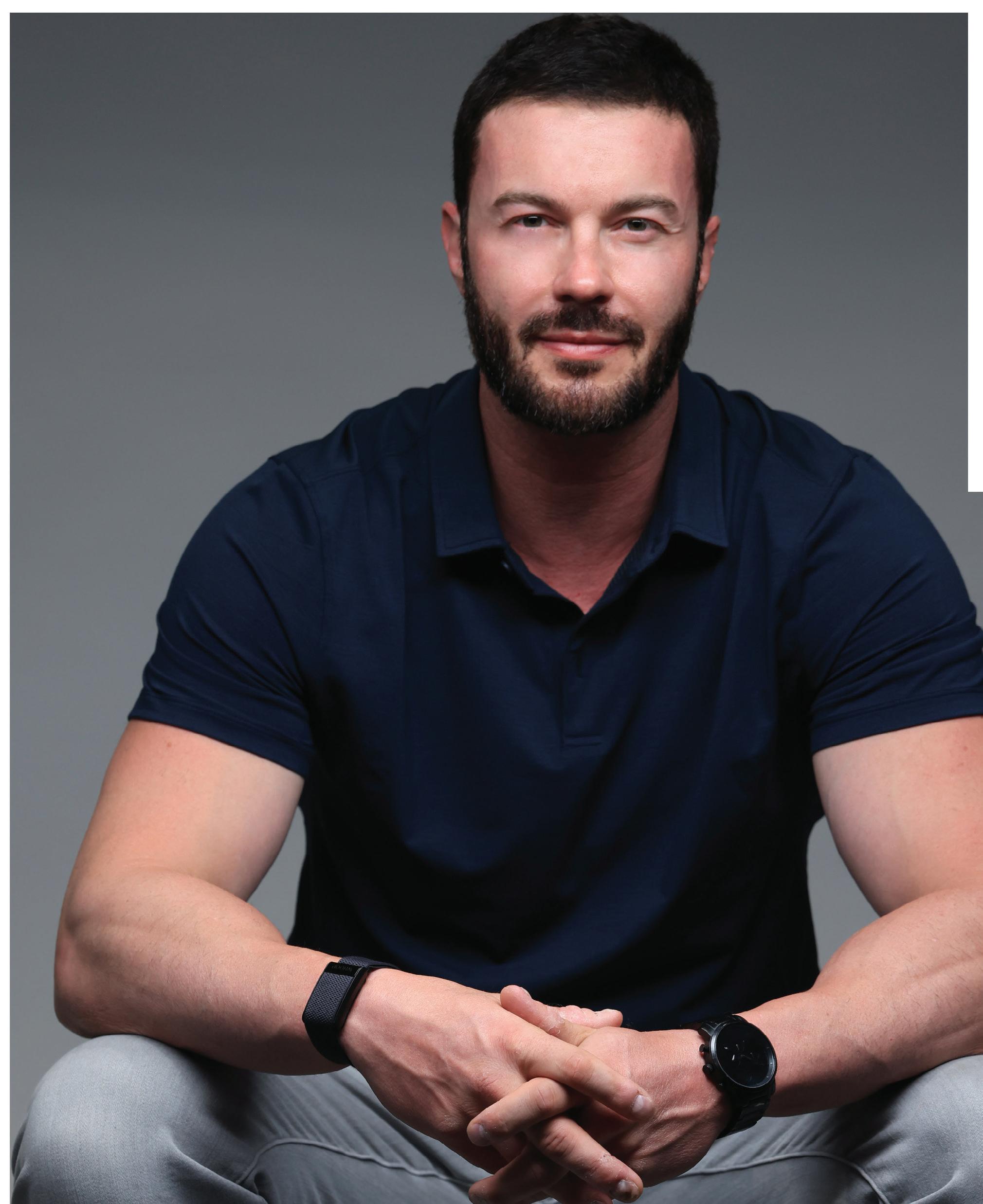
THE CURE FOR YOUR CRIMINAL CASE 701-7800 (702)
DUIdoctor.com
Attorney Adam M. Vander Heyden, Esq.
From Public Defender to Speaker of the Nevada Assembly: Steve Yeager
Whenit comes to enshrining constitutional rights to all Americans regardless of financial status, public defenders are absolutely vital. When one is unable to afford an attorney, the Public Defender’s Office will provide them with legal representation in the decisions and actions of the courtroom that can oftentimes be confusing to someone who doesn’t have a Juris Doctorate. The importance of the services provided by public defenders cannot be understated when it comes to ensuring that American courthouses don’t turn into a kangaroo court where the defendant doesn’t have any adequate form of representation.
And luckily for the pursuit of fair and equal justice in future lawmaking, a decent number of former public defenders have become elected officials in very high-ranking positions within not only several state Legislature bodies but also serving as judges
 By: Josh Kasoff
By: Josh Kasoff
in courtrooms that range in jurisdiction and power from appellate courts, to U.S District Courts across the country and with the recent addition of Justice Ketanji Brown Jackson, The United States Supreme Court as well. In fact, Justice Brown Jackson is the first former federal public defender to serve on the Supreme Court.
Fortunately for the future lawmaking of a politically purple state such as Nevada, a former public defender who served for eight years is now serving as the very powerful Speaker of the Nevada Assembly. Not only that, but the public defender turned politician has also served as either chair or vice chair in numerous vital Nevada Assembly committees such as the Judiciary, the Growth and Infrastructure and the Redistricting and Elections Committees.
20 | VEGASLEGALMAGAZINE.COM
“I wasn’t sure that I wanted to be a lawyer growing up.” Speaker Steve Yeager recollected. “I applied to law school not knowing exactly whether I wanted to be a lawyer or what type of law I would practice. I just wasn’t ready to get out there and start a career just yet and I don’t think I have any lawyers in my family. So it was a career choice that was pretty unique for me.”
Following his graduation from Cornell Law School in 2004, Yeager practiced commercial litigation law for large companies in Phoenix as well as insurance defense and class action work. Although not previously having practiced criminal law, Yeager took a position with the Clark County Public Defender’s Office in March of 2009 and relocated to Las Vegas. During his tenure with the Public Defender’s Office, Yeager personally witnessed the many damaging flaws and often-occuring injustices of the American criminal justice system.
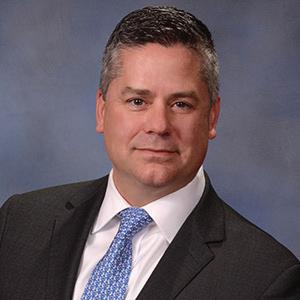
“It was apparent to me right when I got into that work that the criminal justice system was very uneven. It seems people who committed the same type of crime or were in the same situation ended up getting treated very differently when it came to different sentences and sometimes whether or not they would even be charged. A huge takeaway for me was the overarching theme for me of seeing criminal law at work where some people were punished too harshly and others weren’t punished harshly enough.”
Given his lengthy tenure at the Public Defender’s Office, Yeager dealt with many of the overprosecuted cannabis-related cases in the several years before Question 2 passed and legalized the plant. One such case in 2011 or 2012 involved a woman who had been charged with multiple charges of cannabis trafficking despite the fact that the defendant was a medical marijuana cardholder. The defendant was accused of providing cannabis for other medical patients, as medical dispensaries were yet to open and patients had no retail way to procure their cannabis. The defendant system to distribute cannabis resembled more of a co-op instead of a retail dispensary and this operation was apparently run in an unsophisticated and unorganized manner. Ultimately, she’d be charged with felonies due to undercover officers visiting her shop and being able to purchase products from her.
“It seemed very over the top,” Yeager recalled, “as she was facing life in prison when she was really just
trying to help other patients.”
By 2013, the Nevada Legislature had finally authorized the opening of medical dispensaries and Yeager was able to significantly reduce his client’s punishment. Through meeting with the District Attorney at the time, the client didn’t receive a single felony conviction or have to serve prison time.
“That experience showed me that there was a lot of power in the Legislative process. If the 2013 Legislature had not authorized dispensaries, I think the case would have ended a lot differently. It would’ve been a high stakes case where we’d have to go to trial and convince a jury that she shouldn’t spend life in prison over trying to provide cannabis to other cannabis patients.”
The Clark County Public Defender’s Office would also be incredibly influential for Yeager’s successful foray into Nevada politics.
“I was really recruited into politics.” Yeager joked. “I was just doing my job at the Public Defender’s Office, blissfully unaware of what was happening politically. Then a couple of people reached out and asked if I would be interested in lobbying on behalf of the Public Defender’s Office in Carson City. Every session, the office would send someone up there to lobby for criminal justice issues. I was chosen to be part of the Clark County lobbying team and that was the first time I ever went to Carson City and saw the Legislature in person. Even then, I didn’t intend to run for office. But it turned out that my
Assemblyman decided not to run for re-election, so it became an open seat.”
Unfortunately, Yeager won the Democratic Party’s primary but didn’t win his first general election in 2014, as District 9’s election went in favor of the Republican candidate David M. Gardner. This loss didn’t impact Yeager’s drive, as he went up to Carson City again in 2015 to once again lobby the now Republican-led Assembly on behalf of the Public Defender’s Office. One of the major types of legislation that Yeager lobbied for on behalf of the Public Defender’s Office were bills related to the opening of medical cannabis dispensaries as well as other bills related to progressive mental health and substance abuse treatment services in Nevada.
“Anything we could do to provide offenders with treatment and diversion and then making sure the criminal justice system and the criminal code itself was fair in the way it was administered. A lot of it was procedural and substance in terms of criminal law, but I was able to expand and go into mental health and healthcare bills because that’s usually a part of what’s going on with someone when they get involved in the criminal justice system. And I
had a very different lobbying experience in 2015 and decided to once again run for office in 2016. Thankfully, I’ve been successful ever since.”
After the reverse of the 2014 election occurring and Yeager winning the 2016 election for District 9 against Gardner by nearly 3,000 votes, Yeager continued to advocate for the same type of bills that he lobbied for during his time with the Public Defender’s Office. In the four Legislature sessions that Yeager has served in the Assembly for, the Assemblyman has increasingly become one of if not the strongest legislative ally and champion for cannabis reform and the strengthening of the Nevada cannabis industry.

“My goal has always been to move the industry forward and to find the right balance between having businesses that can thrive and having supply for customers but also having appropriate regulatory oversight.”
One of the most groundbreaking bills that Yeager sponsored and pushed through multiple committee meetings for the Nevada cannabis industry was the 2021 Assembly Bill 341. With this bill, Nevada
lawmakers authorized the opening and operation of cannabis consumption lounges. Besides giving designated and memorable consumption spaces to the millions of annual visitors that Las Vegas and Reno receive along with the thousands of locals that consume cannabis, AB 341 also provides the currently turbulent industry with a new business avenue for significant revenue and job creation simultaneously.
“I think AB 341 was very important because as the readers may know, when Nevada passed legal cannabis, there was a prohibition from consuming it in public. So in Las Vegas, we have a big problem where we have 40 million tourists a year but nowhere for them to consume because hotels generally turn cannabis away because they’re worried about federal legality with their gaming licenses. To me, it didn’t make sense that we didn’t have a place where all these people could consume.”
Beyond just the glitz of glamour of Las Vegas tourism, AB 341 could help Nevadans who aren’t allowed to consume cannabis in their own home, such as Section 8/federally subsidized housing recipients due to the Schedule I status of the plant or overly strict landlords that prohibit smoking in their properties.
“With other cannabis legislation, it’s just trying to get the system right. Originally, Nevada cannabis started as being regulated by the Department of Health and Human Services, then over to the Department of Taxation and neither of those are where it really belongs. So we created the Cannabis Compliance Board and we’re looking at the gaming structure as a model where we have a separate agency that will oversee the cannabis industry.
I think the initial legislation that we passed wasn’t perfect, but we’re going back every session to figure out what the right balance is. Appropriate regulation, but we also have to have an environment where consumers have choice and don’t have to pay exorbitant prices and businesses can thrive in this market. But that’s always tricky with a new industry.”
The Nevada cannabis industry gained a considerable advantage during the first days of the 2023 Nevada
Legislative Session when Assemblyman Yeager was sworn in as Speaker of the Assembly. The advantage has already paid off for the industry, as several different cannabis-related bills passed this session. One such bill, Senate Bill 277, doubled the daily purchasing limits for Nevada cannabis consumers and Senate Bill 328 which changes the procedure in which new CCB board members are appointed as well as the qualifications and terms of those members.
Yeager hypothesizes there could be future change to Nevada’s cannabis industry, from possibly an expansion of the consumption lounge program to a change in how the industry and its business owners are taxed. And whenever younger representatives truly take power and there’s cannabis reform on the federal level, Nevada will have years of quality experience to become a national powerhouse.
The reform of cannabis’ current Schedule I status on the Controlled Substances List alone would be a tremendous reform. Currently, cannabis companies across the country have steep trouble at utilizing proper banking services, cannabis employees themselves cannot receive a federally backed mortgage loan, US veterans may be at risk of losing their VA benefits and there’s several more issues regarding 2nd Amendment rights in relation to cannabis possession and usage. Even a simple reform at the federal level would have legislative and policy-altering shockwaves across multiple departments of the American federal government.
“I think Nevada is in a unique place because if there was a relaxation of the federal prohibition, there would be unique opportunities for Nevada to work with other states and companies.”
Josh Kasoff can be reached at joshkasoffwriting@ gmail.com.
VEGASLEGALMAGAZINE.COM | 23

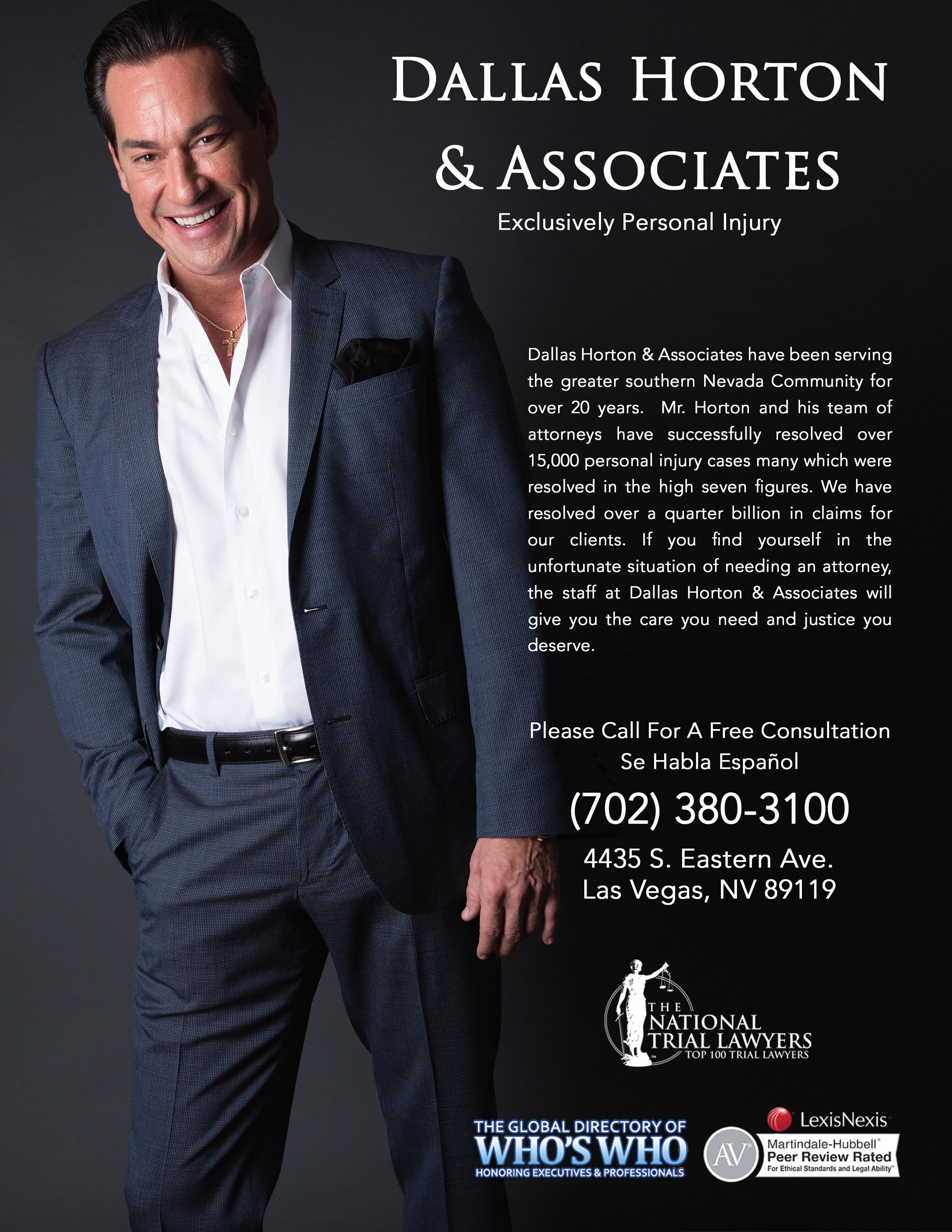
145 MILES IN 5 DAYS
Beginning on July 12th, I will run 145 miles over five days from Milwaukee, WI to Valparaiso, IN which is approximately a marathon a day.


Why I'm Running
This is very important to me as my sister-in-law was diagnosed with MS and lives with the daily effects.

In addition to running, I have committed to raising $10,000. Consider supporting my run here:
MS Run the US is dedicated to raising awareness and funds for those living with multiple sclerosis (MS) to provide hope, to aid those living with disability from the disease and to support research to stop it.
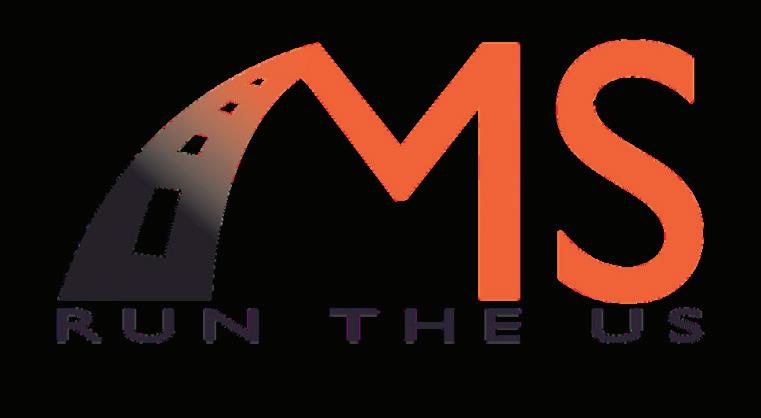
msruntheus.org
“De Becker Investigations provides timely, cost-effective, and superlative professional services performed with the utmost discretion.”
James J.
Esq.
THE JIMMERSON LAW FIRM
ee ations, m has of highprivate ada, it f investigative services for over 20 years. Hal de Becker’s clientele range from distinguished attorneys and law firms from around the globe, casino moguls, high-profile entertainers, professional athletes, Fortune 500 companies and private individuals who all share one goal: to be provided with the absolute truth!
“I am extremely pleased with the work by Hal and his staff at De Becker Investigations. Hal and his team were assigned to locate someone who had committed criminal fraud against me They were not only able to find him quickly but also when he fled they were able to locate him in a different state ”
 Brian Valentine Senior Vice President AMAZON.COM
Brian Valentine Senior Vice President AMAZON.COM
“My clients and I extend our greatest appreciation to De Becker Investigations for the thoroughly professional and efficient manner in which they conducted their investigation.”
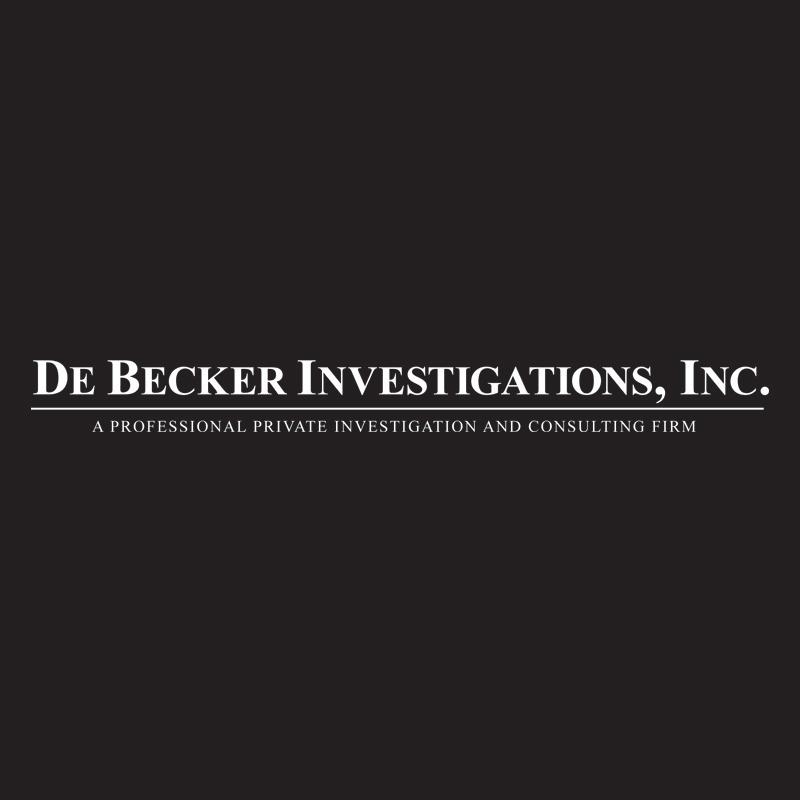 Donald J. Campbell, Esq. CAMPBELL & WILLIAMS
Donald J. Campbell, Esq. CAMPBELL & WILLIAMS

DEBECKERINVESTIGATIONS.COM info@debeckerinvestigations.com Direct:
702.982.5200 Toll Free: 800.608.6155
Jimmerson,
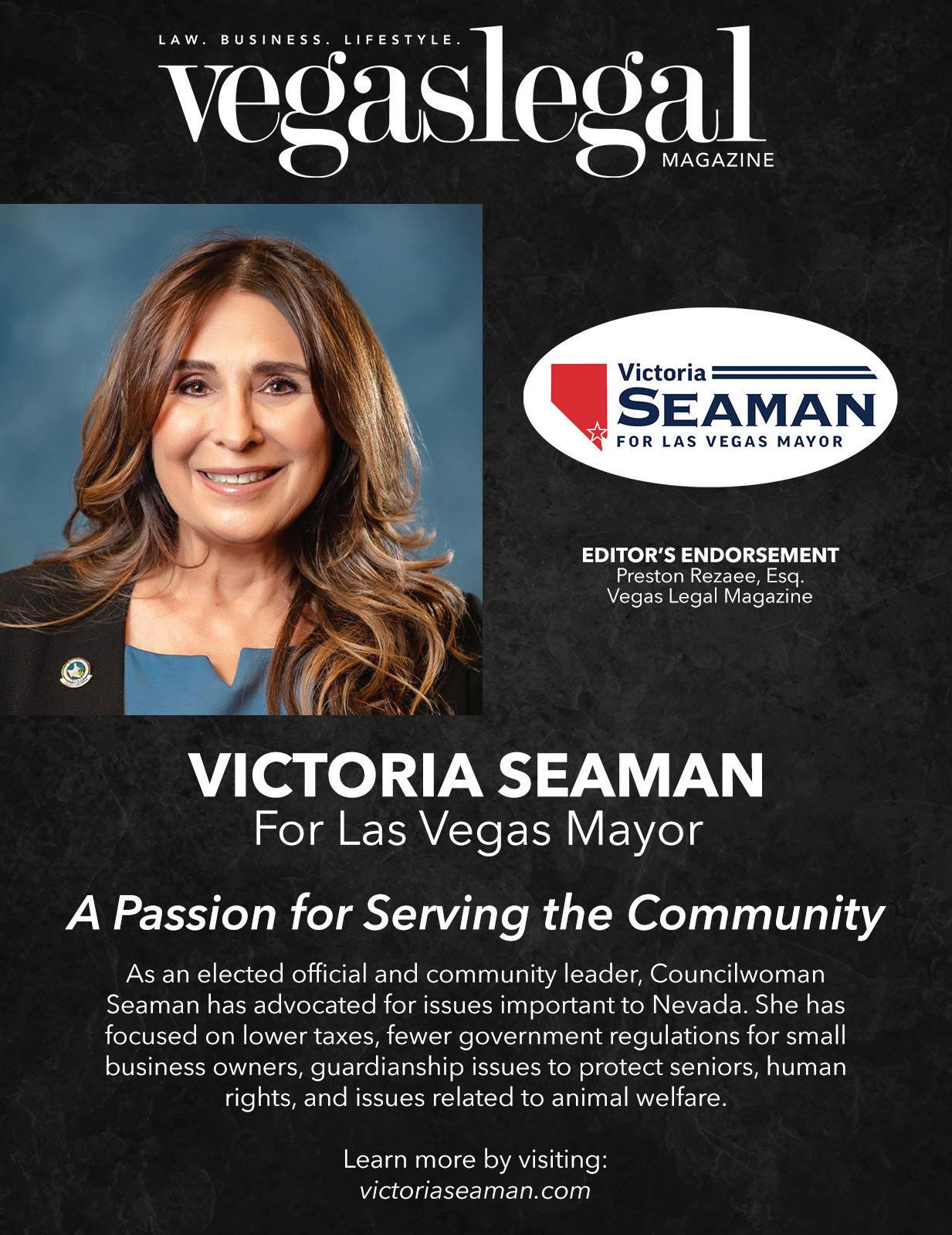


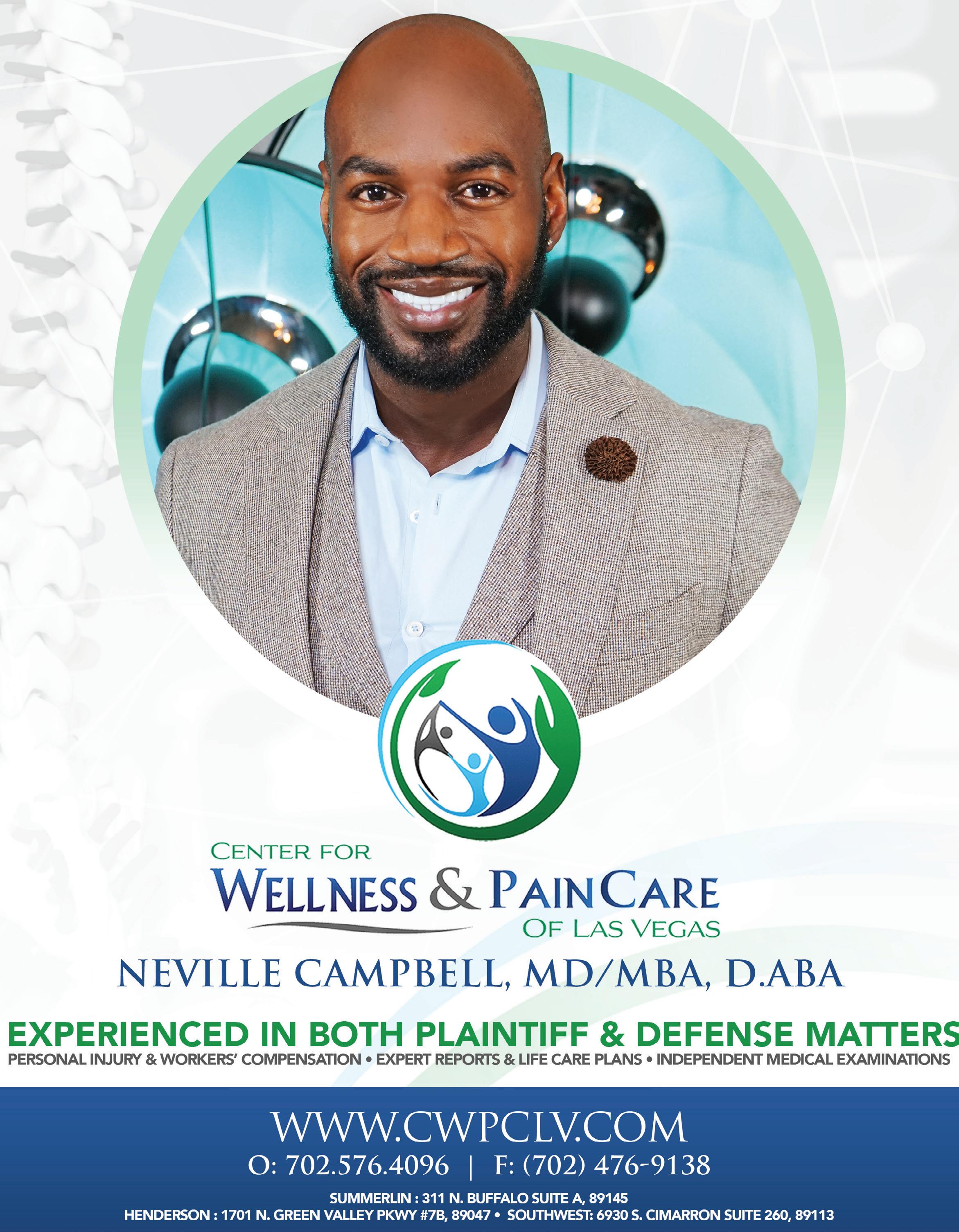



Nevada Attorney General Aaron Ford is Focused on Serving the State Now; Stays Mum on His Future Plans
Aaron Ford likes protecting Nevadans. Whether it be protecting consumers against scams, or safeguarding residents from deadly fentanyl, keeping Nevadans safe is a top priority for the state attorney general.
Ford first spoke to Vegas Legal Magazine in 2018, while running for his first term as Nevada’s AG. In November of last year, Ford won a second term in office. His victory in November solidified his status as a state politician on the rise.
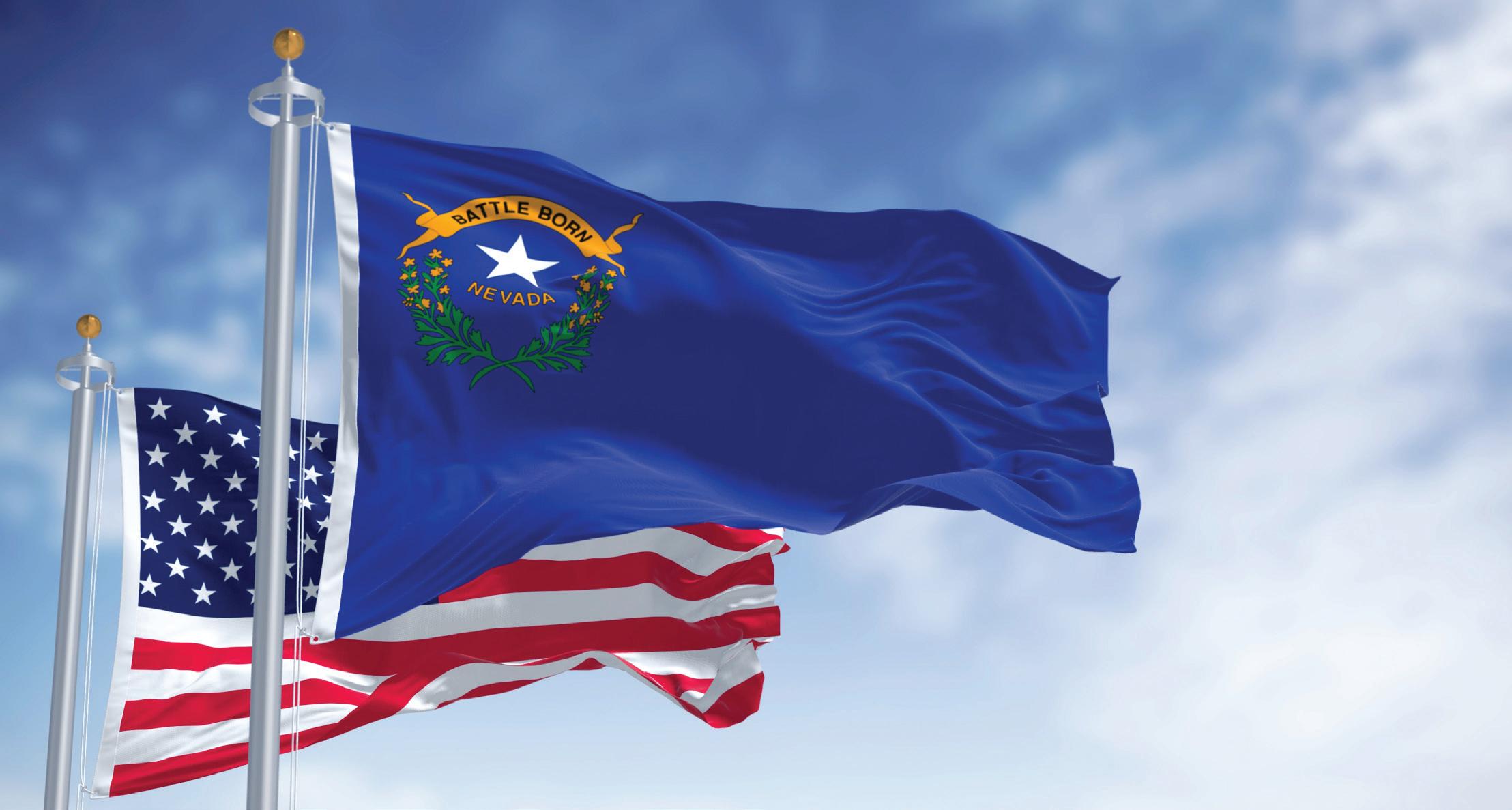
In this follow-up story, Ford talks about what he still wants to accomplish as Nevada’s AG. But can we expect Ford to run for senate, or Nevada governor, in the future? Aaron Ford says he just
By: Valerie Miller
wants to concentrate on the job at hand.
“Right now, my focus is on serving the people of Nevada as their attorney general,” he responds. “It’s been the best job I’ve ever had, and I look forward to continuing the pursuit of justice in all we do.”
A Look Back at How It All Started
Aaron Ford didn’t take the traditional path to becoming a lawyer, lawmaker and now attorney general of Nevada.
A Dallas native, now 51, Aaron Ford became “the man of the house” as a teen after his parents split up. His parents’ divorce meant that
VEGASLEGALMAGAZINE.COM | 31
Aaron had to watch his younger siblings while his mother worked nights.
Money was tight. But his mother, Denise Cliaborne, put Aaron in the Saturday-school program, Project Upward Bound, which helps students become the first in their families to go on to graduate college.
Aaron Ford later received a scholarship to Texas A&M University, where he would earn his bachelor’s degree. But while in college, Ford became a father at 21. After the relationship with his then-girlfriend ended, Ford took custody of his son Avery and raised him. Those times were tough, and this resulted in Ford seeking public assistance, including the food stamp program now known as the “SNAP.” Ford also received assistance in raising his son through the Woman Infants and Children program, or WIC, and Section 8 housing.
The road to where Ford is today was far from smooth. While in his 20s, he had a number of brushes with the law. Aaron’s life took a positive turn when he met his future wife, Berna, in 1994. The couple are now both lawyers, and are raising four boys, including the Ford’s nephew. The Fords first landed in Las Vegas in 2000, and moved around for jobs. The couple permanently moved back to Las Vegas in 2007. Before joining Eglet Prince, Aaron Ford was a partner at the Snell & Wilmer law firm’s Las Vegas office. He previously also worked as a middle school math teacher.
Ford recalls how he got involved in politics in the first place: “It started off with my oldest son posing somewhat of a ‘gotcha question’ when I moved the family back to Las Vegas in 2007. He’s in medical school now,” he explains. “But he knew then that he wanted to be a doctor, and with the Clark County School District being ranked so poorly, he asked why moving here would be best for the family.”
Ford says he knew he had to be part of the solution: “My involvement with public service started then and there, when I decided I needed to get involved with what was happening with education in our state,” he continues. “(This was) not just for my family, but for all of Nevada’s families.”
Now settling into his second term as Nevada’s top law enforcement official, Aaron Ford answered a wide range of questions about his stances on issues, as well as his top priorities in his second term as the state’s AG.
Vegas Legal Magazine: As Nevada’s attorney general, can you discuss what your main goals and objectives were for the 2023 Nevada legislative session?
Aaron Ford: We had quite a few goals for the 2023 Legislative session, including protecting victims of domestic violence, ensuring our office has jurisdiction to combat organized retail crime, and combatting the fentanyl epidemic.

32 | VEGASLEGALMAGAZINE.COM
Assembly Bill 51 removes the 24-hour arrest rule for battery domestic violence cases, and instead allows an officer to make a probable cause arrest for seven days. The new 7-day arrest rule will apply to violations of Temporary Protection Orders, Emergency Protection Orders and stalking as well.
Assembly Bill 50 specifically added authority for our office to investigate and prosecute organized retail crime, which will allow us to be an active partner with other law enforcement agencies in combating the rising waive of organized retail crime in Nevada.
Lastly, Senate Bill 35 reduces the weights involved in fentanyl trafficking offenses from 100 grams, to: 28-42 grams for a category B felony with a minimum one year and a max of 10 years in prison; 42-100 grams for a category B felony with a minimum of 2 years and a max of 15 years imprisonment. SB 35 also requires prisons and jails to allow medication-assisted treatment for prisons.
Senate Bill 35 is the product of extensive work with stakeholders and is meant to avoid a repeat of the failed “war on drugs” strategy.
VLM: What do you think were your main accomplishments during your first term in office?
AF: My first term brought challenges that nobody could have predicted. A year and a half into my first term, the COVID-19 pandemic threw the entire country into an unprecedented period. I will forever be proud of my staff who worked long hours to ensure our state kept running smoothly and took on extra work responding to the eviction crisis, and reports of fraud by those who sought to take advantage of the situation.
At the same time, our nation was confronted with the reality of police brutality when we
witnessed the murder of George Floyd and killing of Breonna Taylor. Tensions were high between law enforcement and many traditionally disenfranchised communities. I listened to and engaged both at virtual town hall meetings.
I was compelled to create real change in law enforcement practices, and subsequently brought forth two reform bills that passed unanimously in the state legislature. Assembly Bill 58 allows my office to investigate potential systemic discrimination in police departments, and Senate Bill 50 puts limits to the use of noknock warrants by police.
VLM: What are your priorities for your second term as Nevada’s attorney general?
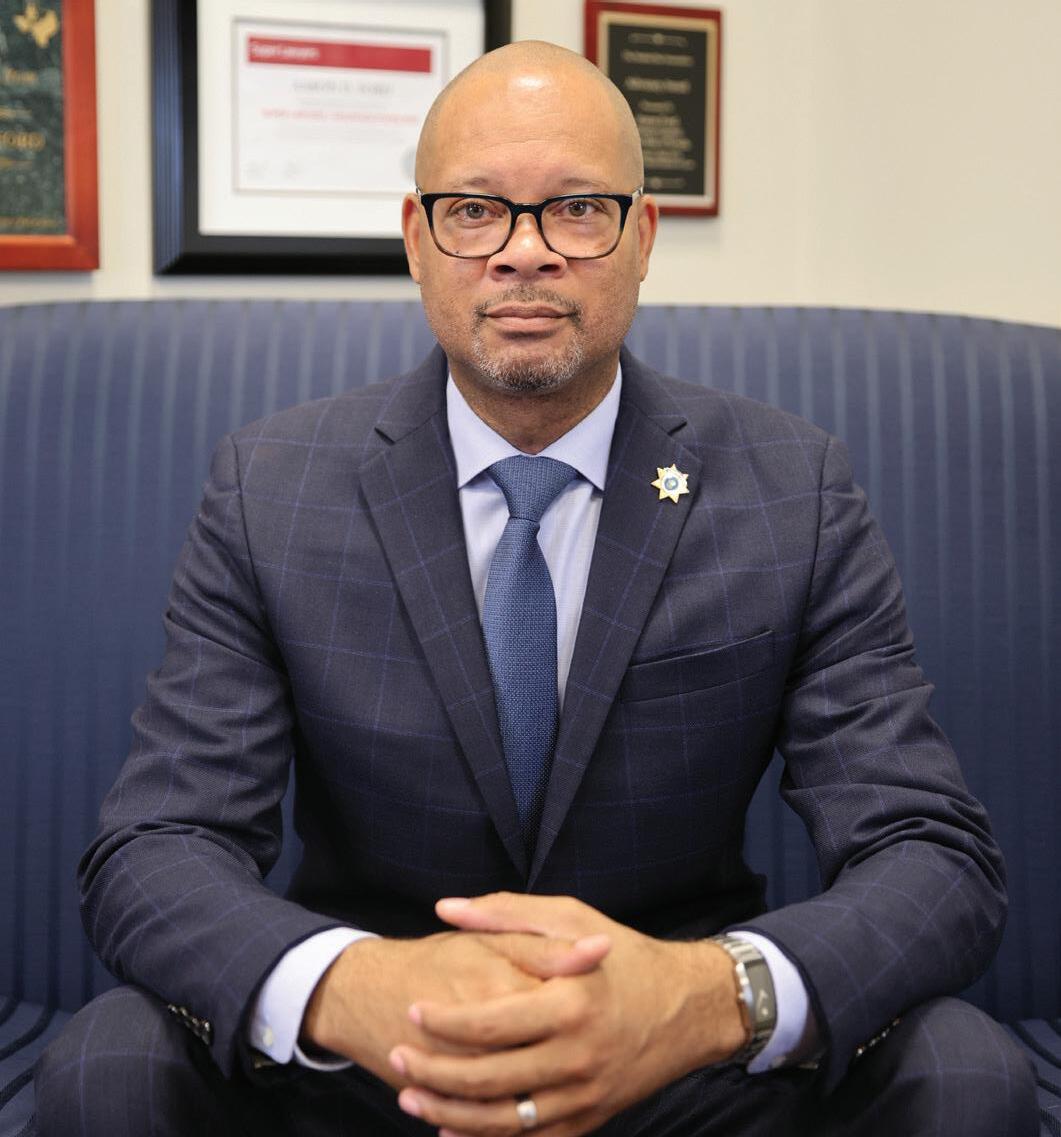
AF: My priority in this second term is the same as it was for my first term, “justice.” Everything we do at the office of the attorney general is about securing and enforcing justice. Whether it’s obtaining a settlement for the state or prosecuting fraudsters, our job is justice, and that will always be my top priority.
VLM: I know you have proposed changes to
VEGASLEGALMAGAZINE.COM | 33
the laws pertaining to fentanyl possession in Nevada. Can you please talk about the importance of lowering the legal limits on the amount of fentanyl possessed by a person, for the purposes of drug-classification charges and stiffer sentencing?
AF: At the outset, let me note that we did not propose a law about “possession” of fentanyl. Rather, in the 2023 legislative session, my office reduced the amount of fentanyl required for a person to be charged with “trafficking.” Under Senate Bill 35, a low-level fentanyl trafficking charge now ranges from 28 grams to less than 42 grams, and high-level fentanyl trafficking charge ranges from 42 grams to less than 100 grams. Before this bill passed, a person had to be in possession of 100 grams of fentanyl to be charged with trafficking. The bill also creates a new crime that applies to persons who sells to another person a mixture containing fentanyl and another controlled substance and who: One,. knows that the mixture contains fentanyl; and two, intentionally fails to inform the purchaser that the mixture contains fentanyl.
These increases are absolutely not meant to impact those who are suffering from addiction. We were very clear from the outset that this bill was not being introduced to replicate the “War on Drugs” that has seen many people in need of treatment being sentenced to extraordinarily long prison terms.
But the bill’s provisions are meant to give law enforcement the tools to go after those who are distributing fentanyl, with no consideration of its extreme lethality.
VLM: Nevada has received millions of dollars in opioid-settlement money. To what types of programs would you like to see those funds applied?
AF: With our recent settlement with Walgreens, the amount of money that my office has
brought into Nevada through these settlements has topped $1.1 billion. I’m extremely proud of the work my office has done in this area, and I want to especially highlight the work done by my chief of my Bureau of Consumer Protection, Mark Krueger, and my Consumer Advocate Ernest Figueroa.
Eglet Adams, our outside counsel, was also an extraordinary force in our work to hold these corporations accountable for the harms inflicted to Nevadans. This firm dedicated a full two-thirds of its personnel to this case, and it expended thousands of hours preparing this case for trial. They were a key part of our wins. Settlement dollars will be appropriated to mitigate the devastating impacts of the opioid epidemic through the Fund for a Resilient Nevada, and the One Nevada Agreement. I want to thank the members of the Advisory Committee for a Resilient Nevada and the Substance Use Response Group Communities for their commitment to proper stewardship of these funds.
VLM: Gun rights and public safety are hot topics right now. How do you plan to balance protecting the Second Amendment rights of residents with the pressure – from some factions -- to implement stricter gun-control laws in Nevada?
AF: Supporting the Second Amendment and advocating for common-sense gun safety measures are not mutually exclusive. For example, measures to keep firearms out of the hands of those afflicted by mental illness do not conflict with the rights of law-abiding Americans to legally access firearms.
But while common-sense gun safety measures can and will reduce gun violence, we must also address the underlying issues that lead to gun violence. These can range from domestic violence to, again, mental health concerns. We have to work together to stop gun violence,
34 | VEGASLEGALMAGAZINE.COM
but there are many who do not engage in good faith arguments on this issue. We cannot simply throw our hands up and allow the ongoing plague of gun violence to continue.
VLM: Nevada is a state that has the death penalty, however executions in Nevada have been on hold for quite a while now. Even when a condemned prisoner requests to have his death sentence carried out, the state’s hands seem tied. Can you please talk about the current status of capital punishment in Nevada, and where you think the battle over the death penalty is headed in our state?
AF: Well, I have been clear in past comments that while I personally oppose the death penalty, I will enforce the law as written in my job as attorney general. I sincerely hope there is further policy discussion on this issue. In the meantime, I have a duty to the State of Nevada to do the job I was elected to do, which is to uphold the law. As long as I am attorney general, I will ensure that any executions carried out in Nevada pass constitutional muster.
VLM: You have talked about criminal justice reform, while at the same time pledging to enforce Nevada’s existing laws. Can you please explain more about what your plan would include?
AF: I’ve said this before, but I think it’s a good example. When I was growing up, in the neighborhoods I was in, sometimes you wanted the police to show up because something bad had happened, but other times bad things happened because the police showed up. There was a dichotomy in how people viewed police.
I’m interested in lessening that dichotomy, in ensuring that police are viewed as part of the communities they’re serving and do not cause concern on their arrival. Listen, nobody wants to live in an unsafe neighborhood, so law enforcement as a concept is a necessary part of our society. Police fill an important role as community caretakers, but to perform that
role effectively, there must be trust between law enforcement and the communities that we serve. As attorney general, I’ll continue trying to ensure that trust is realized.
VLM: Can you please explain to the readers what types of cases your office handles, as opposed to those cases handled by city or county law enforcement?
AF: The Nevada Attorney General’s office handles a wide variety of cases. People should think of us as the attorney for state government agencies and representation for the people of Nevada in service of public interest. We also investigate and prosecute certain crimes that violate state law.
VLM: You have argued in favor of police body cameras in Nevada. Can you please discuss the importance of law enforcement officers wearing body cameras?
AF: Police body cameras offer transparency and accountability when an officer’s actions come into question in the line of duty. These cameras are important because they help law enforcement learn from mistakes, and help their leaders understand exactly what areas of training need to be implemented or reinforced. If an officer acts improperly or illegally, cameras serve as a record of their actions. Police body cameras also serve to protect law enforcement from untruthful claims of misconduct by the public. Any officer who is doing their job with integrity and according to training protocols should see body cameras a validation tool for all of their hard work.
This is important for marginalized communities which have been, historically, the targets of police impropriety, because there is that added layer of accountability. Obviously, body cameras are not a universal fix for accountability, but they are a step in the right direction.
VLM: Election integrity has been a big concern in Nevada since the pandemic. What steps has your office taken to ensure that we have safe
and secure elections in the Silver State?
AF: I stand behind the work my office does to protect the integrity of Nevada’s elections. I urge anyone with a credible allegation of voter fraud to contact my office. While voter fraud can happen, it is exceedingly rare, and I will prosecute to the fullest extent of the law anyone who might try to interfere with our free and fair elections.
As you may recall, there was abundant rhetoric alleging mass voter fraud in the 2016 and 2020 presidential election cycles. However, when evidence came to bare, only two instances of voter fraud were uncovered. My office prosecuted those two individuals.
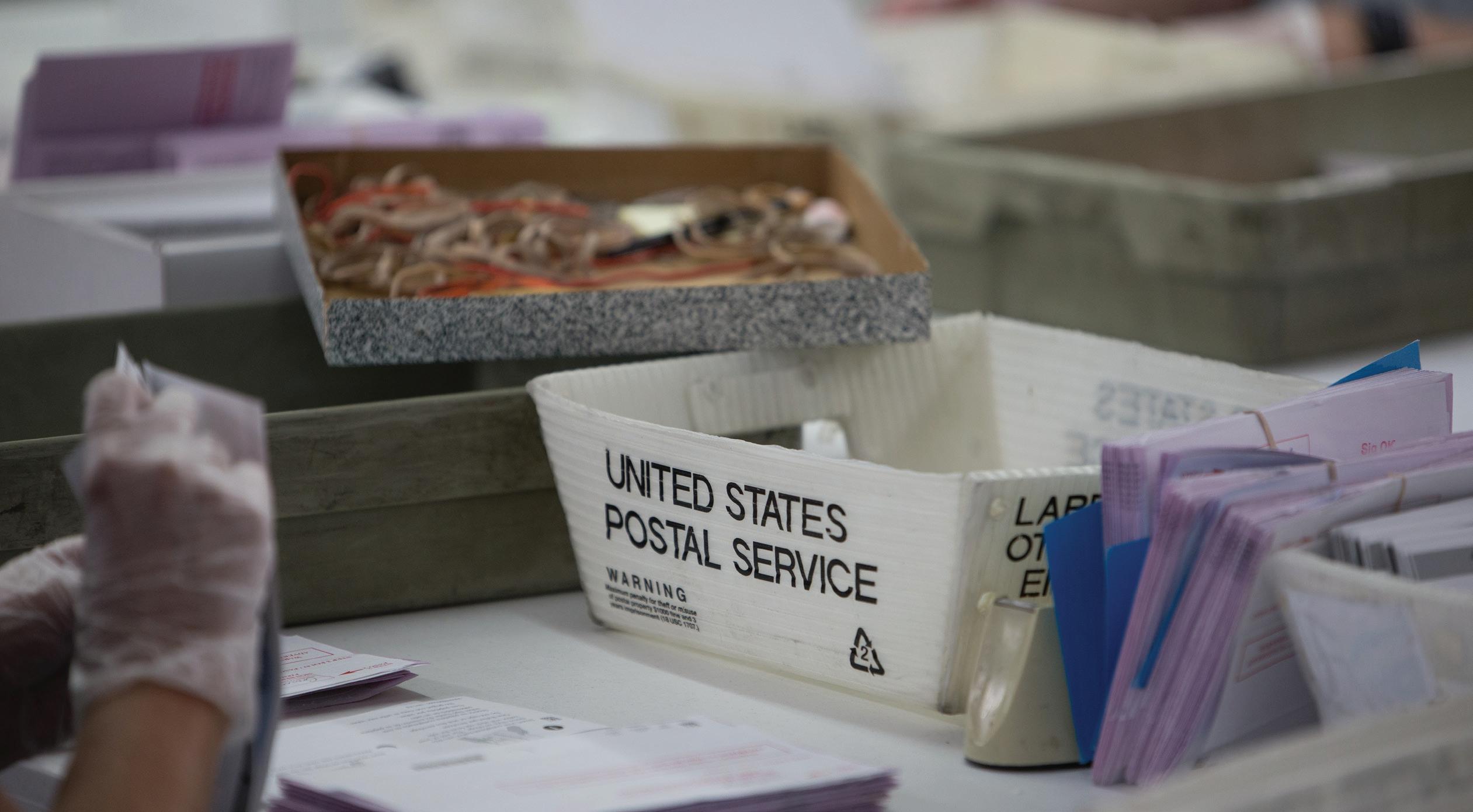
In 2021, for example, we prosecuted a Las Vegas man who had cast his deceased wife’s ballot. It was a particularly egregious case because that gentleman had spread inaccurate information beforehand that was meant to cast doubt on Nevada’s free and fair elections.
VLM: It’s been a year now since the U.S. Supreme Court overturned Roe v. Wade (with the Dobbs’ decision), leaving abortion rights
issues to the states to decide. Abortion is already a right protected in the Nevada Constitution. Therefore, do you see any legal impact on Nevada from the Supreme Court decision?
AF: The right to an abortion is protected in Nevada, and I will take any steps necessary to protect those in our state who wish to access reproductive health care services. I do, however, want to stress that Nevadans must be vigilant against efforts to strip away this right. Due to the Dobbs’ decision, there are no longer any federally protected rights to abortion care. As such, a national law restricting abortion could supersede Nevada law. There are groups that would absolutely push such a law, and we must not let them erode our rights even further. In addition, restrictions on abortion services in other states could see Nevada become a destination for those who cannot access these services otherwise. While we welcome all to our state, we will not aid any state in investigating or prosecuting those who come to Nevada for an abortion. I want to thank these providers for their work and their commitment to individual health-care decisions.
VLM: You were recently on a list of people
banned from entering Russia. I don’t believe the list included a reason for the ban. Why do you think you were banned from entering Russia, and what are your feelings on it?
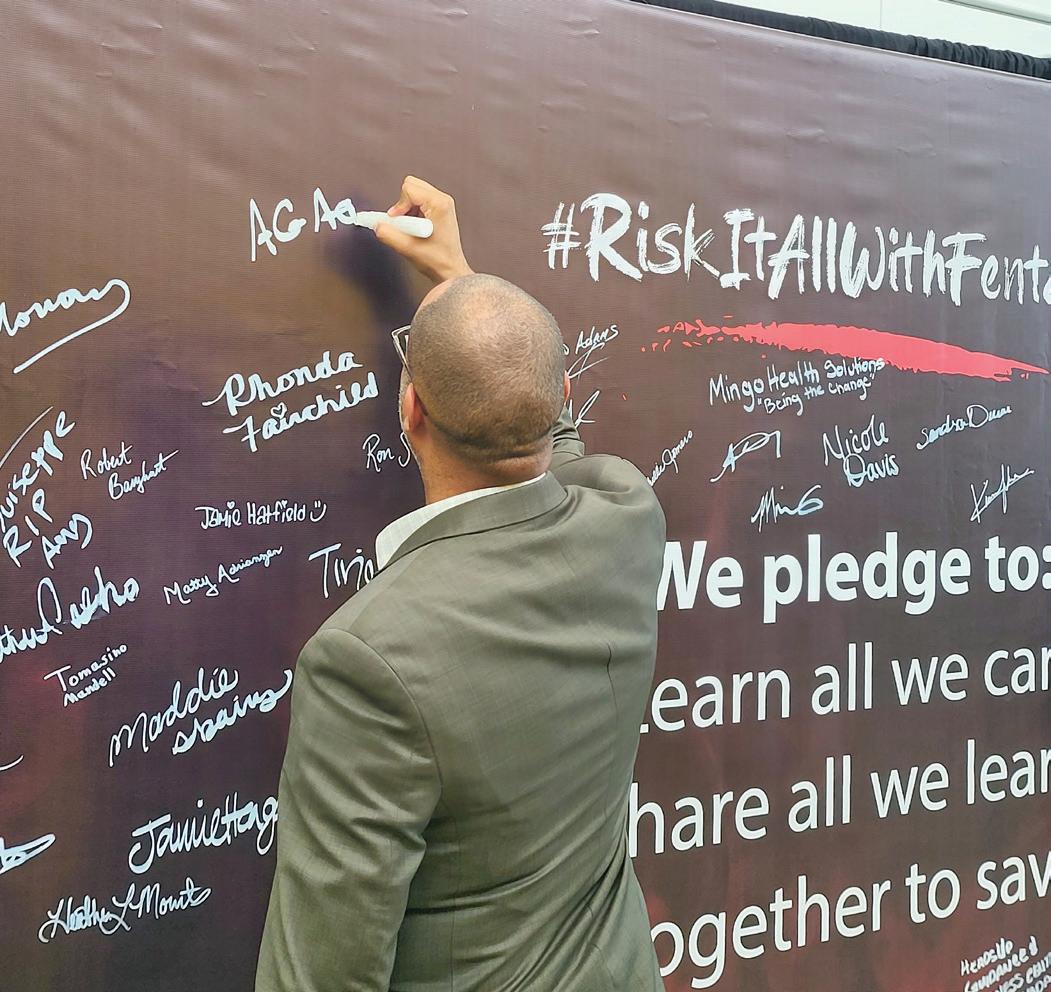
AF: I can’t speculate as to why I was banned from entering the Russian Federation. It wasn’t on my bucket list of places to visit so; the ban doesn’t bother me in the least.
VLM: What are your future goals, after completing this term as Nevada’s attorney general? Would you ever consider a run for governor or senate in the future?
AF: Right now, my focus is on serving the people of Nevada as their attorney general. It’s been the best job I’ve ever had, and I look forward to continuing the pursuit of justice in all we do.
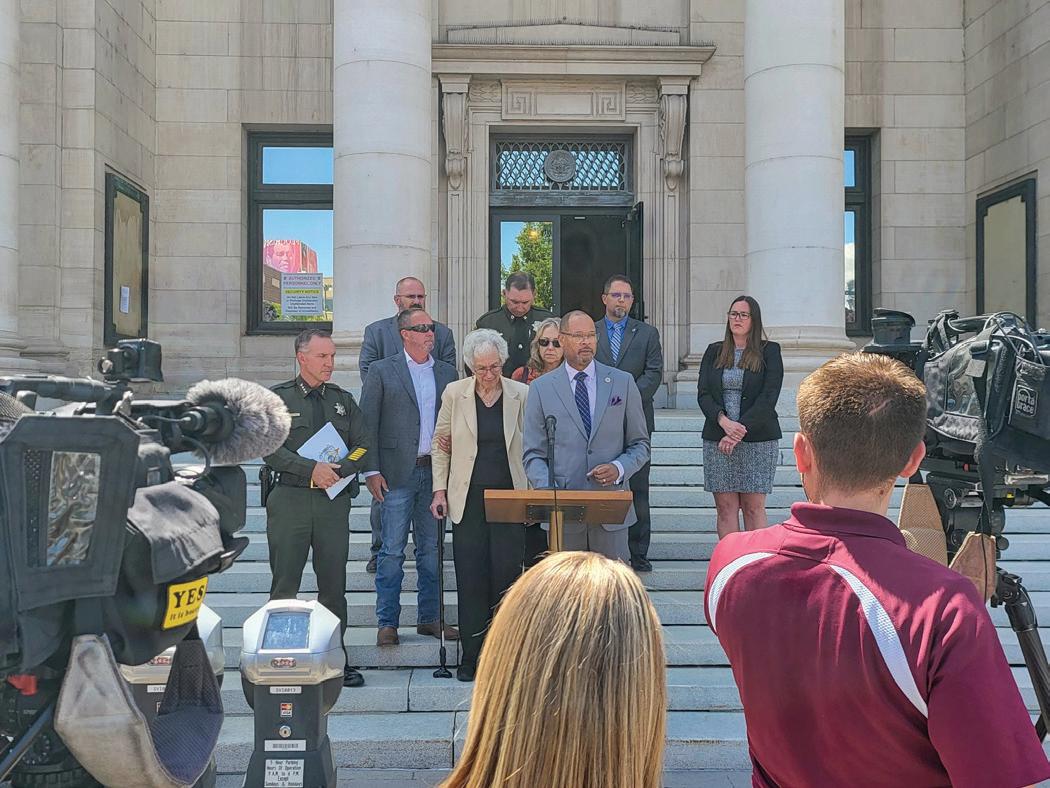
VLM: Can you please discuss how your life experiences brought you to this point, of being Nevada’s attorney general?
AF: It started off with my oldest son posing somewhat of a “gotcha question” when I moved the family back to Las Vegas in 2007. He’s in medical school now but he knew then that he wanted to be a doctor, and with Clark County School District being ranked so poorly, he asked why moving here would be best for the family.
My involvement with public service started then and there, when I decided I needed to get involved with what was happening with education in our state. (This was) not just for my family, but for all of Nevada’s families. My dedication to Nevada, and the people who live here only deepens with each year. Now, here I am 16 years later, serving as the state attorney general.
Valerie Miller is a Las Vegas Valley-based awardwinning journalist. She can be reached at (702) 683-3986 or valeriemusicmagic@yahoo.com.

VEGASLEGALMAGAZINE.COM | 37
AG Ford at Fentanyl Awareness Summit
AG Ford with students from the Upward Bound Program for College Prep Saturday
AG Ford speaking on the footsteps of the Reno courthouse after Charles Sullivan sentencing
Business


“Success is walking from failure to failure with no loss of enthusiasm.”
– Winston S. Churchill
Business Spotlight
REAL ESTATE AGENTS
BERKSHIRE HATHAWAY: (702) 496-9302
MITCH FULFER, REALTOR
ADG REALTY: (702) 315-6100
KELLER WILLIAMS REALTY: (702) 212-2222
FOSTER REALTY, LLC: (702) 552-0120
XTREME REALTY: (702) 384-7253

LAWYERS
PRESTON P. REZAEE, ESQ.: (702) 222-3476

ROSS GOODMAN, ESQ.: (702) 383-5088
DALLAS HORTON, ESQ.: (702) 380-3100
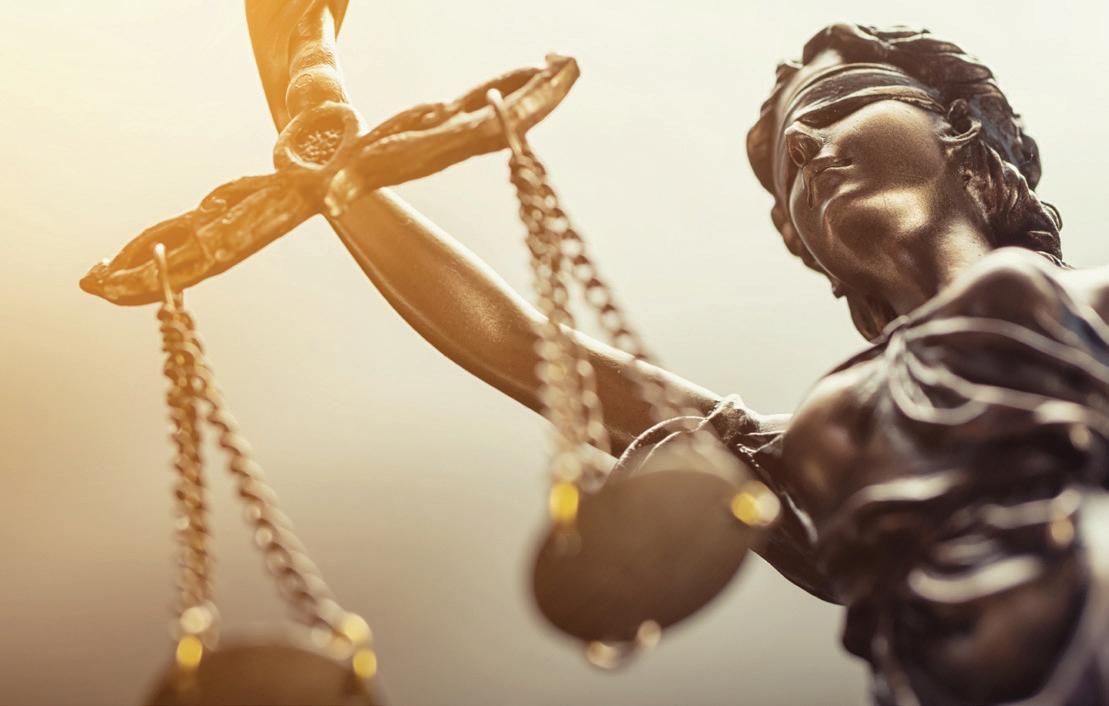
J. MALCOLM DEVOY, ESQ.: (702) 669-4636
NEDDA GHANDI, ESQ.: (702) 878-1115
AMANDA LAUB, ESQ.: (702) 329- 5282
MORTGAGE COMPANIES
RED ROCK MORTGAGE: (702) 320-9595
ALDERUS MORTGAGE: (702) 255-5783
VALLEY VIEW HOME LOANS: (702) 710-5626
FIRST OPTION MORTGAGE: (702) 669-5400
FAMILY MORTGAGE INC.: (702) 216-3000
DENTISTS
GARDEN COSMETIC & FAMILY: (702) 869-5700
GENTLE DENTAL RANCHO: (702) 680-1009
AFFORDABLE DENTAL: (702) 794-0304
DISCOUNT DENTAL: (702) 386-8811
PEARLY WHITES FAMILY DENTISTRY: (702) 605-7814

Business Spotlight
DOCTORS
DENNIS YUN, M.D.: (702)-386-0882
TEDDY SIM, D.C.: (702) 277-1371
MICHELLE HYLA, D.O.: (702) 386-0882
DR. NEVILLE CAMPBELL, M.D./M.B.A: (702) 476-9700

ANDREW M. CASH, M.D.: (702) 630-3472
CPAS
THE ACCOUNTANT, LLC: (702) 389-2727

DONOVAN THIESSEN, CPA
ELLSWORTH & STOUT: (702) 202-0272
MARK SHERMAN: (702) 645-6318
HALL & ASSOCIATES: (702) 629-1886
SANFORD & COMPANY: (702) 382-1141
LARRY L. BERTSCH: (702) 471-7223
WEALTH MANAGEMENT
REDROCK WEALTH MANAGEMENT: (702) 987-1607
SPARROW WEALTH MANAGEMENT: (877) 330-9191
ARISTA WEALTH MANAGEMENT: (702) 309-9970
CORNERSTONE WEALTH MANAGEMENT: (702) 878-4742
MORGAN STANLEY: (702) 792-2000
SALONS/BARBERS

KAYA BEAUTY: (702) 898-5292
NY HAIR COMPANY: (702) 432-3333
TRUE AVEDA LIFESTYLE SALON & SPA: (702) 364-8783

BOULEVARD BARBER SHOP: (702) 384-1453
MYSTIQUE HAIR STUDIO: (702) 432-6006
Written By Mark Martiak
As of August 11th, the top ten stocks in the S&P 500 accounted for 90% of the index’s year-todate gains. (Elle Caruso, Top 10 Names…ETFTrends. com, 4/5/23) In fact, with the 2Q23 earnings season ending, corporate profits have surprised to the upside, with strength in the consumer sectors, construction, travel, and streaming/gaming. With that being said, the recent broadening has been moderate at best, and mega-cap tech stock valuations remain stretched. The top ten stocks currently account for over 30% of the index, which is down from the peak levels we saw in the spring, but still extremely high relative to the last 25 years. Importantly, and in contrast to their weight in the index, the earnings contribution of these top ten stocks is sitting near its pre-COVID level, but well below the pandemic era highs. Despite this misalignment in weights and earnings, the VIX, which is known as the volatility index, has remained
STATE OF THE MARKET
at historically low levels, perhaps aided by the market becoming increasingly confident in a soft landing for the U.S. economy.
Whether this performance is sustainable hinges on inflation. Any prolonged stickiness in core CPI may push the Fed to maintain a hawkish stance, thereby increasing the odds of a recession. In such a scenario, we would expect to see earnings revised lower, leaving the market, where valuations are already stretched, particularly vulnerable.
Recent strong employment figures and lower inflation data have led the equity market to price a stronger economic growth outlook.
As inflation recedes, the pace of price increases should also decelerate and be less of a tailwind for sales, placing more importance on volumes to

42 | VEGASLEGALMAGAZINE.COM
grow sales. Consensus estimates show that analysts expect 92% of S&P 500 companies will post positive nominal sales growth in 2024 and expect aggregate sales will rise by 4%.1
While many management teams were pessimistic on the economy in late 2022 and following banking stress in March, sentiment has improved. Several companies acknowledged the resilience in the U.S. economy had led them to now expect a soft-landing. But other companies still anticipate a near-term recession, albeit later than previously expected, and some companies continue to incorporate a slowdown in economic growth into their planning and guidance.

Artificial intelligence (AI) continues to be a hot topic for both investors and company managements. The proportion of companies discussing AI on earnings calls soared this quarter. Several management teams explained to Wall Street Analysts how recent increases in demand for AI will boost demand for their products.
Stocks deemed to be AI winners have exhibited robust performance so far this year. In particular, the seven largest stocks in the market are widely considered to be major AI beneficiaries. These stocks have rallied by 59% YTD.
Expected future uses of AI include financial advisory, efficiency improvements, customer personalization, automation, pharmaceuticals, data modeling, and marketing.
Consumer Spending and the Budget Situation:
The Commerce Dept reported in mid-August that consumer spending was up in July as inflation slowed. “The advanced retail sales report showed a seasonally adjusted increase of 0.7% for the month, better than the 0.4% Dow Jones estimate. Excluding autos, sales rose a robust 1%, also against a 0.4% forecast. Both readings were the best monthly gains since January.” As the numbers are not adjusted for inflation, they showed a consumer able to keep ahead of price increases that have been prevalent over the past two years. The consumer price index rose 0.2% on the month, indicating solid demand.2 Up: food service, bars, online retailers, sporting goods. Down: furniture sales, appliances, electronics, vehicle sales, gas stations.3
Much of this consumer spending has been on credit – credit card balances reached $1T for the first time in 2Q23.4
In a series of eleven increases since March 2022, the Fed has taken up its key borrowing rate by 5.25
percentage points to reach its highest level in more than 22 years. Regardless, consumers, who power about two-thirds of the entire $26.8 trillion U.S. economy, have persevered.5

We are entering an era where the national budget will be stretched thin by the Boomers’ retirement, and the basic economic conditions that existed in the 80s and 90s no longer apply, particularly with regards to interest rates. “Interest costs last year were 1.9% of GDP, the highest since 2001. We are projecting this year will be 2.5% of GDP, the highest since 1998.”6
From Washington to Wall Street and Main Street, the U.S. is on the cusp of some big budget challenges. If voters do not hold politicians’ feet to the fire investors will.
Expect the unexpected over the final four months of 2023. The markets dictate the economy, not the other way around. Plan and be disciplined about your asset allocation strategies. When you need to be defensive, cash can be your friend.
If you need to define whether you have any financial blind spots, please reach me directly at mmartiak@ allianceg.com.
Mark Martiak is a New York-based Investment Adviser Representative and Accredited Investment Fiduciary® for AGP / Alliance Global Partners, a registered investment adviser and broker-dealer, Member FINRA | SIPC. Mark is a regular Contributor to VEGAS LEGAL MAGAZINE and has appeared on CNBC’s CLOSING BELL, YAHOO! FINANCE MIDDAY MARKET MOVERS, FOX BUSINESS NETWORK and has been quoted in THE WALL STREET JOURNAL. Check out the Martiak Market Update Podcast wherever you listen to your podcasts.
Such forward-looking statements are subject to significant business, economic and competitive uncertainties and actual results could be materially different. There are no guarantees associated with any forecast and the opinions stated here are subject to change at any time and are the opinion of the individual strategist. Data is taken from sources believed to be reliable, but no guarantee is given of
its accuracy. Indexes are unmanaged, and investors are not able to invest directly into any index. Past performance is no guarantee of future result.
News items are based on reports from multiple commonly available international news sources (i.e., wire services) and are independently verified, when necessary, with secondary sources such as government agencies, corporate press releases, or trade organizations. All information is based on sources deemed reliable, but no warranty or guarantee is made as to its accuracy or completeness. Neither the information nor any opinion expressed herein constitutes a solicitation for the purchase or sale of any securities and should not be relied on as financial advice. Forecasts are based on current conditions, subject to change, and may not happen.
U.S. Treasury securities are guaranteed by the federal government as to the principal and interest. The principal value of Treasury securities and other bonds fluctuates with market conditions. Bonds are subject to inflation, interest-rate, and credit risks. As interest rates rise, bond prices typically fall. A bond sold or redeemed prior to maturity may be subject to loss. Past performance is no guarantee of future results. All investing involves risk, including the potential loss of principal, and there can be no guarantee that any investing strategy will be successful.
The Dow Jones Industrial Average (DJIA) is a priceweighted index composed of thirty widely traded blue-chip U.S. common stocks. The S&P 500 is a market-cap weighted index composed of the common stocks of five hundred largest, publicly
traded companies in leading industries of the U.S. economy. The NASDAQ Composite Index is a market-value weighted index of all common stocks listed on the NASDAQ stock exchange. The Russell 2000 is a market-cap weighted index composed of 2,000 U.S. small-cap common stocks. The Global Dow is an equally weighted index of 150 widely traded blue-chip common stocks worldwide. The U.S. Dollar Index is a geometrically weighted index of the value of the U.S. dollar relative to six foreign currencies. The market indexes listed are unmanaged and are not available for direct investment.
1 Goldman Sachs Portfolio Strategy Research S&P 500 Beige Book, “3 themes from 2Q 2023 conference calls: AI, US economic growth, and drivers of sales growth (volume vs. pricing),” 8/15/23

2 CNBC.com, “Retail sales increased 0.7% in July, better than expected as consumer spending is holding up,” Jeff Cox, 8/15/23.
3 CNBC.com, “Retail sales increased 0.7% in July, better than expected as consumer spending is holding up,” Jeff Cox, 8/15/23.
4 CNBC.com, “Credit card balances jumped in the second quarter and are above $1 trillion for the first time,” Jeff Cox, 8/8/23.
5 CNBC.com, “Retail sales increased 0.7% in July, better than expected as consumer spending is holding up,” Jeff Cox, 8/15/23.
6 First Trust Monday Morning Outlook, “An Age of Fiscal Limits,” 8/15/23
Mortgage Rates Rise with the Summer Heat
By Daniel Herrera
As the summer heats up and temperatures continue to rise; so are mortgage interest rates. As July wrapped up with very minimal changes to the interest rate environment to start the 3rd quarter, August has not seen such tranquility. Week to week, mortgage rates have continued to rise. Rates in the 3’s were great, 4’s were good, 5’s were nice, 6’s were reasonable but the current normal is heading to 7’s and 8’s. Is it too early to say that we may see rates as high as 9% or possibly in the double digits? Not at all.
Current mortgage rates are at the highest point that our country has experienced over the past 25 years, with no ceiling in sight. Mortgage applications have also continued to decline week over week, over the past 4 weeks. Less homes are becoming available on the market as inventory begins to stagnate. The urgency to find a new
home before school begins has come to an end; thus, the summer sizzle of family relocations has also ended as families welcome their children back into their new school year.
Consumers are seeing little to no incentive to sell their homes and buy a new home. If a family sells their current home that they have a 4% interest rate on and buys a larger home at a 7% interest rate, even if they finance the SAME amount on their mortgage, they would be paying approximately $800 more monthly (based on a $400,000 loan). Realistically, in order to get a bigger and better home, the typical consumer would be financing a larger amount on their mortgage for a more expensive home. This is where the stagnation begins. Consumers are more willing to stay in a home simply due to the fact that they will not increase their financial overhead. This does not

mean that there are no homes available and that no one is willing to buy.
With the growing cost incurred in owning a home, we also see that rents begin to rise across the board. The average rent has increased 2% in the Las Vegas valley in 2023 alone. The average 2 bedroom apartment median rent is currently around $1600 in Las Vegas. The rent increases between Fall 2020 through Spring of 2022 were between 25-40% (depending on region) and have stabilized at the higher rate. The median market rate, as of August 2023, on home rentals is hovering around $2000 within Las Vegas. This number is slightly lower than at this same time last year (approximately $150 lower than August of 2022). But remember, paying rent is the equivalent of paying 100% interest.
As of June of this year, Las Vegas home prices are down around 5.2% from last year while sitting at a median sales price of $412,000. On average, homes are receiving two offers and sell after being listed for around 38 days. Last June, these same homes were selling for more while only being on the market for 18 days on average. In June of 2022, 1,326 homes were sold whereas only 1,146 homes were sold this June. As many Americans look to relocate out of their current cities, 2% of the nation’s searches were for homes in Las Vegas. The number one location for Los Angelinos was also Las Vegas over other big cities such as San Francisco and Seattle.
The Las Vegas real estate market is one of the most dynamic and constantly changing markets in the U.S. A major factor contributing to the growth of the Las Vegas valley is the strong job market. There are many industries that drive the Las Vegas job market but the constant growth in gaming, entertainment and hospitality seem to be the major players for the Entertainment Capital of the World. With the growth of the city and the influx of more residents, the natural demand for homes also continues to grow, which in turn, also causes an increase in the value of homes. The state of Nevada is also a no income tax state which automatically provides a little more “bang for your buck” in the Silver State.
All in all, Las Vegas is still growing and will continue to grow. The rate of growth is slowing down but in reality, it does not feel that way. If you drive around town, regardless of the neighborhood, you will see new construction throughout the valley. Turn the corner, a new restaurant; drive 2 miles, new model homes; drive the strip, another casino breaking ground. With new attractions, such as the future Las Vegas A’s Major League Baseball team and the hosting of the Super Bowl and F1 Racing, the valley will continue to grow. Consumers will continue to need housing and rates are only one obstacle in the purchasing process. People will continue to buy, builders will continue to develop new neighborhoods and the Las Vegas Valley will continue to grow.
Herrera is the Senior Mortgage Loan Specialist at Laser Mortgage. He can be reached at 714.878.3112 or daniel.herrera@ lasermortgage.com
 Daniel
Daniel




The Oakland A’s Plan Big League Move to Las Vegas Strip
By: Valerie Miller
Las Vegas is closer to getting its own “Field of Dreams.” After decades of trying to lure Major League Baseball to Southern Nevada, the Oakland Athletics have struck a deal to build a new ballpark on the Las Vegas Strip.

The A’s have committed to relocate to Las Vegas and build a $1.5 billion, 30,000-seat stadium on at least nine acres on the site of the Tropicana hotel. That site is 35 acres in total.
Bally’s, which owns the Tropicana, has offered the A’s the nine acres for free. That planned stadium land is worth $180 million. Bally’s, which also owns Gaming and Leisure, Inc., has given the A’s the
additional option of more land for a retractable roof.
In June, the Nevada Legislature passed Senate Bill 1, which would allow for $380 million of public funds to go to the A’s planned stadium. Nevada Gov. Joe Lombardo signed the bill into law the same month.
The A’s organization is planning to have the new Las Vegas ballpark opened by 2028. Construction would begin by 2025. While the A’s will play in Oakland through the 2024 season, the team has not determined where they will play the three seasons after that – and prior to the Las Vegas’
50 | VEGASLEGALMAGAZINE.COM
ballpark’s 2028 opening – according to the Athletics organization.
Why Las Vegas?
Las Vegas has become a boom town for professional sports with the NHL expansion of the Vegas Golden Knights in 2017, followed by the NFL’s Raiders arrival in 2020. The Raiders also departed Oakland for Las Vegas. Add to that the Super Bowl coming to Las Vegas in February, along with the Formula 1 race in November, and Las Vegas has become “a sports and entertainment capital of the world,” the Athletics’ organization says.
Major League Baseball, or MLB, also gave the A’s a push toward a Vegas relocation after two years of talks in Oakland, according to the baseball club.

“At the same time, MLB asked us to consider a new venue in the alternate market of Las Vegas,” the Athletics state. “The MLB and the (Major League Baseball Players Association) imposed a deadline of January 2024 to secure a binding agreement for a new ballpark.”
The lack of a deal in Oakland, combined with the Bally’s land offer, made Las Vegas the frontrunner for the A’s new ballpark, the A’s organization maintains. The passage of SB 1 for the $380
million in public funding solidified the move to Las Vegas.
The economic impact of the A’s move to Las Vegas is estimated to be $1.3 billion, including stadium construction jobs, the Athletics state.
Stephen Miller, the director of the UNLV Center for Business and Economic Research, has studied sports and their economic impact on Las Vegas. He says there is still a lot that is unknown about the impact of the A’s big league move to Las Vegas. This makes it hard for him to determine what kind of money having the team in Las Vegas will bring in – once the stadium construction is complete.
“Do attendees substitute buying A’s tickets for some other recreational expenditure, such as a round of golf or dinner and a movie? If so, then it may be a zero-sum game,” Miller says. “Also, the stadium is small at 30,000-plus (seats), but it does fit into the range of seating venues in Las Vegas.”
“Finally, will the A’s attract visitors to Vegas to attend games and stay around for a few days?” Miller asks. “If ‘yes,’ then that is a boost to Vegas’ number one industry, tourism.”
Valerie Miller is a Las Vegas Valley-based awardwinning journalist. She can be reached at (702) 6833986 or valeriemusicmagic@yahoo.com.
The Oakland Athletics Major League Baseball

Club Talks About the Planned Move to Las Vegas
As the landscape of professional sports continues to evolve, Las Vegas is quickly becoming a hotbed for franchises looking to capitalize on the city’s unique blend of entertainment and growing local enthusiasm for sports. The Oakland A’s, a Major League Baseball institution with over a century of history, have recently set their sights on the neon lights of Vegas, in a move that has fans, lawmakers, and entrepreneurs buzzing with anticipation. We sat down with key figures from the organization to discuss this potential relocation, examining the motivations, challenges, and the economic ripple effects such a monumental shift could generate.
Vegas Legal Magazine: What were the major reasons the Oakland Athletics decided to leave Oakland and move to Las Vegas?
Oakland Athletics: After four years of working exclusively on a new ballpark in Oakland, (Major League Baseball) expressed concern about the rate of progress in Oakland. At the same time, MLB also asked us to consider a new venue in the alternate market of Las Vegas. We spent two years on parallel paths in Oakland and Las Vegas. MLB and the (Major League Baseball Players Association) together
By: Valerie Miller
imposed a deadline of January 2024 to secure a binding agreement for a new ballpark. Given the January 2024 deadline and the absence of a deal in Oakland, our efforts in Las Vegas intensified. In May 2023, Bally’s announced a deal to provide nine acres of land on the site of the Tropicana Hotel on the Las Vegas Strip for a new ballpark. In June 2023, the Nevada Legislature passed, and Gov. Joe Lombardo signed SB 1 into law, providing a publicprivate partnership in support of a new ballpark at the site of the Tropicana Hotel on the Las Vegas Strip.
VLM: If the A’s franchise ownership decided that staying in Oakland was not a viable option for the future, why was Las Vegas selected over other cities that also desired to have a major league baseball team?
OA: MLB provided the alternate market of Las Vegas. Bringing baseball to Vegas will secure its place as a sports and entertainment capital of the world. Vegas has seen tremendous success with the [NHL’s Vegas Golden] Knights, [WNBA’s Las Vegas] Aces, [NFL’s Las Vegas] Raiders, [National Finals Rodeo] and soon, [Formula 1 racing].
52 | VEGASLEGALMAGAZINE.COM
VLM: Tax breaks, and public funding, for stadiums work in many different ways. While the NFL’s (nowLas Vegas) Raiders received millions – for their stadium -- through an extra room tax for Nevada visitors, the A’s tax funding will work a different way. Can you talk about how the tax funding for the A’s new Las Vegas ballpark will be structured?
OA: The public contribution to Allegiant Stadium was funded by an increase in the existing room tax in Las Vegas. The public contribution to the A’s new ballpark is being funded by a combination of transferable tax credits from the State of Nevada, and bonds that will be issued by Clark County. A majority of the transferable tax credits -- and all of the bonds issued by Clark County -- will be repaid by taxes that are specifically generated from the building and operation of the new A’s ballpark.
VLM: The A’s will be playing in Oakland at least through the 2024 season. As the Las Vegas ballpark is not expected to be completed until 2028, where will the A’s play after the 2024 season – and prior to the new ballpark’s completion?
OA: Where we will play in the interim has yet to be determined.
VLM: What kind of a boost do you expect the Las Vegas economy to get from the A’s move to Las Vegas?
OA: A 30,000-fan capacity ballpark creates a unique venue for year-round use. The ballpark is expected to attract 2.5 million annual visitors and fans, including an estimated 400,000 new incremental tourist visitors to Las Vegas. During construction, the project will create 16,000 construction jobs for local residents. The A’s new ballpark will require approximately 14,600 jobs over a three-year construction period, will support 5,400 jobs on an annual basis, and have $1.3 billion in annual economic impact.
VLM: The A’s have plans for an approximately 30,000-seat ballpark to be built on the Las Vegas Strip. This will be one of the smallest major league baseball stadiums or ballparks. Can you please discuss why team ownership decided to go for a smaller venue? What are the benefits of the smaller seating capacity?
OA: MLB is trending toward building more intimate ballparks, which allows every seat to feel close to the field. We had considered a similarly intimate ballpark in Oakland.
VLM: Las Vegas locals complain that some of the major sports franchises already in town – specifically the NFL’s Raiders and the NHL’s Vegas Golden Knights – price their tickets out of range for the average fan. Does the Athletics’ team ownership have plans to make going to A’s games in Las Vegas affordable for locals?
OA: We expect to have tickets available at a range of prices, including family-friendly tickets.
VLM: How much of a factor was the location of the Athletics’ triple A affiliate – the Las Vegas Aviators -in the parent club’s decision to move to Las Vegas?
OA: We see tremendous benefits to having our minor league affiliate in the same market. Vegas has seen success with this model with the Golden Knights and Silver Knights.
VLM: Are there any concerns by A’s ownership, or management, about an oversaturation of professional sports in Las Vegas by the time the new ballpark is completed?
OA: With games from March to October, baseball will fill a gap in the Vegas sports calendar, catering to both locals and visitors.
VLM: Is the marketing of the soon-to-be “Las Vegas A’s” going to be primarily directed at tourists or at locals, or both?
OA: While these plans have yet to be solidified, it’s important to market to both tourists and locals.
VLM: Is there anything else that you think is important to discuss about the A’s planned move to Las Vegas?
OA: We are appreciative for all the encouragement and support we have received to date in Nevada, and we are looking forward to joining an incredible community.
Valerie Miller is a Las Vegas Valley-based award-winning journalist. She can be reached at (702) 683-3986 or valeriemusicmagic@yahoo.com.
Steve Wynn’s Settlement Formally Ends his Nevada Gaming Career
By: Valerie Miller
It is impossible to look at the modern Las Vegas Strip without seeing the fingerprints of casino mogul Steve Wynn. The Mirage, the Treasure Island, the Bellagio, Wynn Las Vegas and the Encore are among the crowning achievements of the visionary casino developer. That era in Nevada gaming came to an official end this summer.
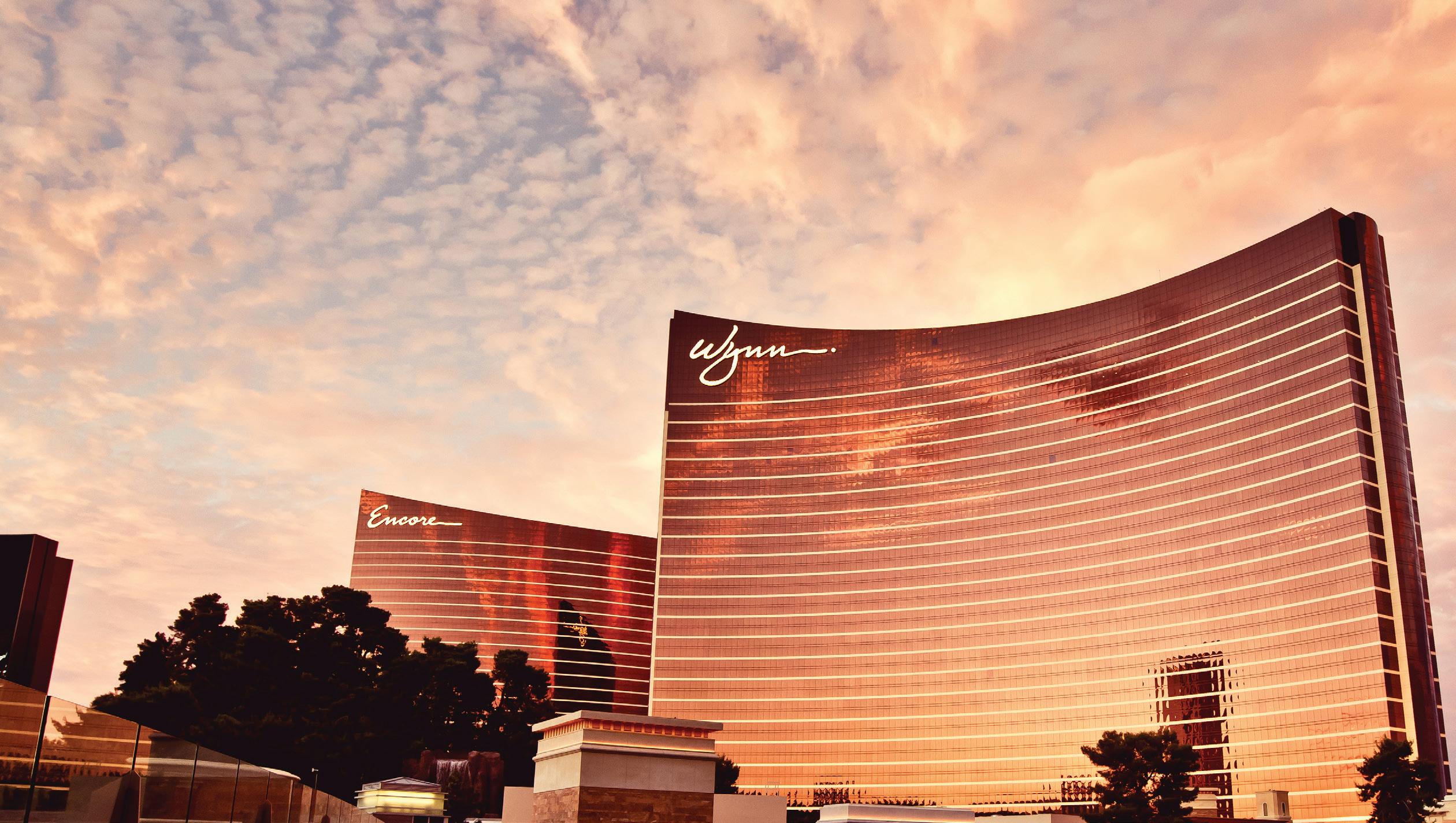
In July, Steve Wynn and his attorneys agreed to a settlement with the Nevada Gaming Control Board that would settle a long-running dispute between the parties. The agreement would mean that Steve Wynn would never be actively involved in Nevada gaming again, and would also pay $10 million in the settlement.
Under the terms of the settlement, Steve Wynn could still own a passive ownership stake in a casino in stocks, as long as it is 5 percent or less. Steve Wynn sold his shares of Wynn Resorts International in 2018. His stake had an estimated value of $2.1 billion.
Steve Wynn had been accused of sexual misconduct and sexual abuse by numerous women at Wynn Las Vegas. He has long denied the allegations, but nonetheless stepped down as the head of Wynn
Resorts in early 2018, after the scandal broke. Wynn also relinquished his gaming license at the time he stepped down.
The settlement does not constitute an admission of guilt, but rather a compromise for both parties. The Nevada Gaming Control Board had filed a complaint against Steve Wynn in October 2019, over the sexual misconduct allegations against him. The board sought to deem him as unsuitable to hold a Nevada gaming license. The board could have also imposed more fines and discipline on Steve Wynn.
Steve Wynn, however, maintained that the board lacked jurisdiction over him, as he had already stepped down from his post as chairman and CEO of Wynn Resorts, and relinquished his gaming license.
This legal dispute had drug on for nearly four years, with victories and defeats for both sides. In December 2019, the Nevada Gaming Commission ruled against Steve Wynn in the dispute, and his attorneys then sued in Clark County District Court. They challenged the claims that regulators had authority over Steve Wynn at that point.
A district court judge ruled in 2020 that regulators
54 | VEGASLEGALMAGAZINE.COM
no longer had oversight over Steve Wynn. But that ruling was later reversed by the Nevada Supreme Court, in March 2022.
Steve Wynn, 81, now resides in Florida. Attorneys for Steve Wynn have not commented for this story. In February 2019, Wynn Resorts had paid a $20 million fine to the gaming commission over claims that former Wynn Resorts executives had failed to “report and/or investigate” sexual abuse and sexual misconduct allegations. That $20 million was the largest gaming commission fine in Nevada history.
Steve Wynn Created the Modern Megaresort Era on the Las Vegas Strip
Long before all the allegations of sexual misconduct, Steve Wynn was viewed mostly as a beloved founding father of Las Vegas gaming. While the head of MGM Mirage, Wynn built the volcano-themed Mirage, the pirate-themed Treasure Island and really took Las Vegas from the casino and slot-joint era to one of big-time attractions and megaresorts.
After selling MGM Mirage, Steve Wynn would create his own Wynn Resorts to open in the 2000s. That lead to the birth of the luxury Wynn Las Vegas, and was followed by the Encore resort. Michael Green, a longtime Las Vegas historian, recalled many of the achievements that Steve Wynn will be remembered for in the world of gaming.
“Steve Wynn did more to create the modern Las Vegas megaresort experience than anyone else. In the mid-1980s, he said that Las Vegas didn’t need

another casino, but it sure could use an attraction. He was right and he delivered it: The Mirage, with its volcano, tropical rain forest theme, and Siegfried & Roy in the showroom -- with their white tiger cubs on site to boot,” Green recalled. “The Bellagio is a gold standard. The Wynn and the Encore also set high standards; Treasure Island expanded on the idea of an attraction. And, indeed, he turned the Golden Nugget into a major hotel from a small gambling hall. His accomplishments are many.”
Green points to Steve Wynn also “creating a new image for Las Vegas casino owners.” This image included art collecting and doing his own entertaining commercials for his hotels. “(He) included Dolly Parton as a maid and Frank Sinatra, (who) responded to Wynn introducing himself as the owner, (by) patting him on the cheek and saying he needed more towels.”
Now unfortunately, adds Green, the legacy of Steve Wynn’s momentous achievements will be tarnished by all the sexual misconduct allegations and scandals of recent years.
“Just as the original builders Wynn supplanted had their own skeletons, it turned out that Wynn had a problem,” Green continued. “Granted that he hasn’t been convicted in a court of law, (but) he has been convicted in the eyes of Nevada gaming regulators -- and many who admired or disdained him.”
Valerie Miller is an award-winning Las Vegas Valleybased journalist. She can be reached at (702) 6833986 or valeriemusicmagic@yahoo.com.



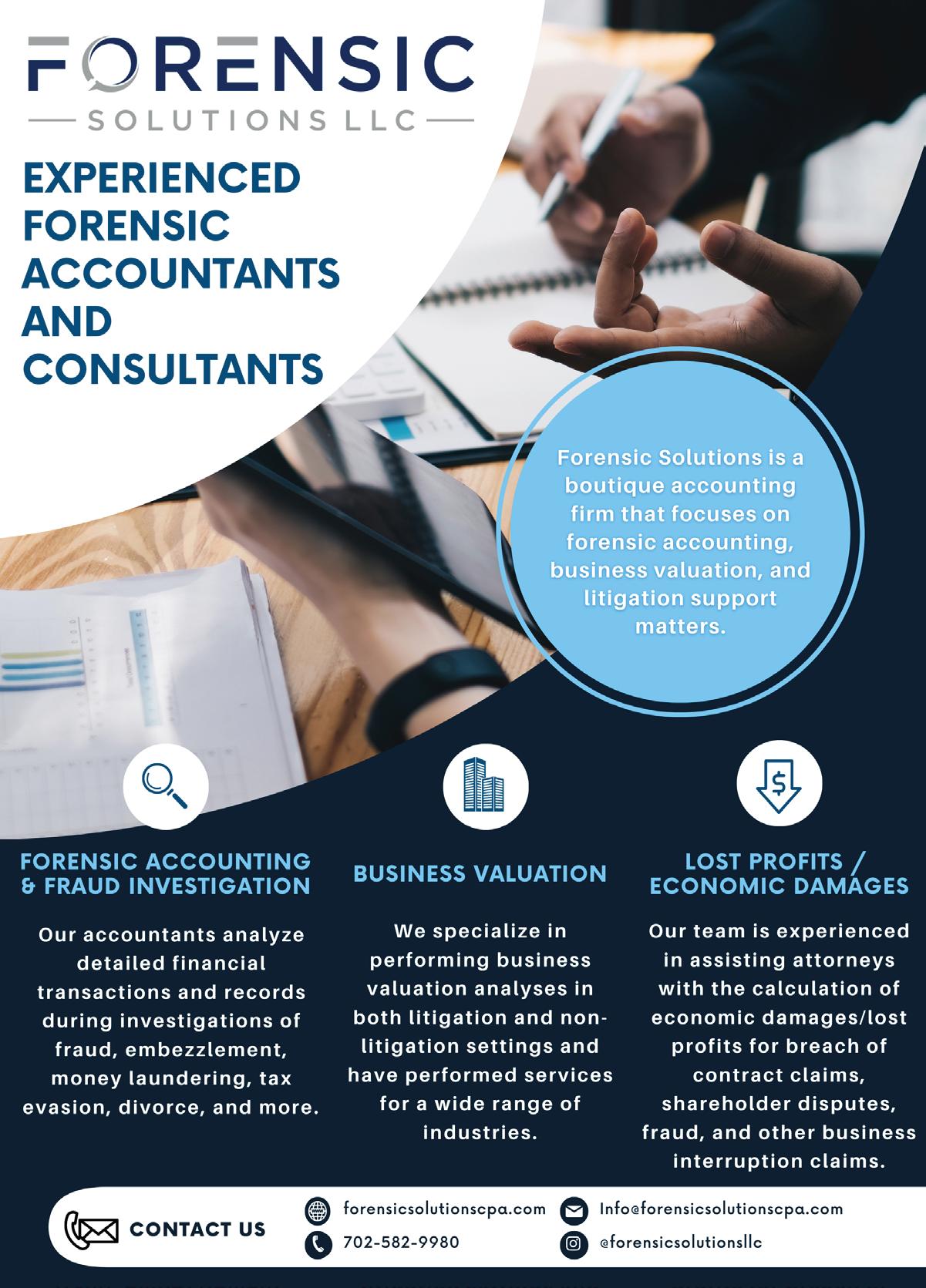































You can with more time. That’s exactly what we give you. Waiting for the courts to re-open to settle your client’s case, but need cash now? USClaims can help. We simplify litigation funding so you get funds in 24 hours with no credit check, no risk, and no payments until their case is settled. We’ll work with you to find the best funding options for your client, so call (888) 645-3049 today.
Litigation Funding Simplified™ Licensed in Nevada
Something here is critical to winning your client’s personal injury case. Can you spot it?
INFLATION REDUCTION ACT:
Tax credits for energy-efficient improvements, solar and electric vehicles
 Written By Donovan Thiessen, CPA
Written By Donovan Thiessen, CPA
Enacted on August 16, 2022, the ‘Inflation Reduction Act of 2022’ encompasses measures influencing health care costs, allocating additional funding to the IRS, and introducing tax benefits promoting clean energy. This article addresses the latter clean energy tax credits that may sway you to make home energy improvements and helps you to understand the latest details regarding the electric vehicle tax credits for new and used vehicles.
As global attention turns increasingly towards sustainable living and energy conservation, governments and regulatory bodies are incentivizing homeowners to make eco-friendly choices. One aspect of the Inflation Reduction Act is the expansion of the Energy Efficient Home Improvement Credit.
Previously known as the Nonbusiness Energy Property Credit, the new law has renamed this incentive as the “Energy Efficient Home Improvement Credit.” This name change reflects a broader objective and a more precise focus on
promoting energy-efficient home improvements among taxpayers.
This credit has been extended through the end of 2032, allowing ample time to plan and execute qualifying energy-efficient projects. The credit amounts to 30% of the cumulative sum of:
1. Qualified Energy Efficiency Improvements: This pertains to the expenses paid by the taxpayer for installations made during the year. Qualified improvements cover energy-efficient insulation, exterior windows, skylights, and exterior doors that adhere to various energy standard requirements. Air sealing insulation, which diminishes heat loss or gain, also finds a place under this category.
2. Residential Energy Property Expenditures: Relevant to any unit employed as a residence by the taxpayer. This is a change from the earlier “principal residence” criterion. These expenditures include, but are not limited to: Electric or natural gas heat pump water heaters, biomass stoves or boilers, natural gas, propane,
or oil-based heating systems, Improvements to electrical components associated with energy efficiency upgrades.
3. Home Energy Audits: Essentially, this involves an inspection and a detailed report about a dwelling, pinpointing major energy efficiency improvement areas and estimated energy and cost savings. The auditor must have specific certifications as determined by the IRS.
The following are the tax credit caps and limitations:
1. General Improvements: Up to $1,200 annually, with specific provisions for heat pumps, water heaters, and biomass systems capped at $2,000 annually.
2. Energy Property Expenditures: Up to $600 annually.
3. Windows: Aggregate limit of $600 for all exterior windows and skylights.
4. Doors: $250 annually for an exterior door, with an aggregate cap of $500 for all exterior doors.
5. Energy Audits: Up to $150 annually.
After 2024, it’s essential to note that taxpayers must furnish the qualified product identification number of the energy-efficient property when claiming credits. In other words, be prepared to deliver your receipts to your tax professional when filing your income taxes.
Residential Clean Energy Credit
A notable change brought by recent legislation is renaming the “Residential Energy Efficient Property Credit” to the more encompassing “Residential Clean Energy Credit.”
Updated Timeline for Credit Phasing: Properties activated after December 31, 2021, and before January 1, 2033, are eligible for a 30% tax credit. For properties activated post-December 31, 2032, and before January 1, 2034, a 26% tax credit applies. Properties coming into service after December 31, 2033, and before January 1,
2035, can avail of a 22% tax credit.
This credit covers various eco-friendly initiatives: Expenditures for solar electric installations, costs associated with solar water heating installations, expenses related to fuel cell installations, outlays for small wind energy setups, historically, qualified biomass fuel property expenditures were included, but expenditures on qualified battery storage technology have now replaced these.
The installation must be affiliated with a dwelling unit situated in the U.S. The dwelling should serve as a residence for the taxpayer. Furthermore, the installed unit must possess a minimum capacity of 3 kilowatt-hours.
Clean Vehicle Credit
The U.S. government is continually reshaping its stance on sustainable transportation. One significant change is transitioning from the “New Qualified Plug-In Electric Drive Motor Vehicle Credit” to the more concise “Clean Vehicle Credit.”
Key Changes to the Credit:
1. Phase-Out Rules Revision: The prior phase-out rules, which came into effect once a manufacturer hit its 200,000th sale, have been eliminated. The new provision states that the credit will not be available for vehicles activated after December 31, 2032.
2. Credit Distribution: The maximum credit remains at $7,500 but now consists of: A $3,750 credit for vehicles meeting the battery components requirement. An additional $3,750 credit for vehicles aligning with the critical minerals requirement.
3. IRS Rule Amendments: As of March 31, 2023, the IRS presented new guidelines related to the EV tax credits concerning critical minerals and battery components. This update drastically
narrowed the list of qualifying vehicles from 41 to 22.
4. Updated Qualifying List: The IRS recently refined the list of Battery Electric Vehicles (BEVs) and Plug-In Hybrid Electric Vehicles (PHEVs) under IRC Section 30D. The details are as of 6/5/23: Cadillac Lyriq EV (2023-2024), Chevrolet models such as Blazer EV (2024) and Silverado EV (2024), Bolt (2022-2023), Bolt EUV (2022-2023), Equinox (2024), Rivian R1S (2023), Rivian R1T (2023), Chrysler Pacifica PHEV (2022-2023), and Lincoln Aviator Grand Touring PHEV (2022-2023), Ford E-Transit (2022-2023), Ford’s F-150 Lighting series (2022-2023), Ford Escape PHEV (20222023), Ford Mustang Mach-E (both extended and standard range batteries, 2022-2023), Tesla Model 3 Long Range (2022-2023), Tesla Model 3 Performance (2022-2023), Tesla Model Y Long Range (2022-2023), Tesla Model Y Performance (2022-2023), BMW X5 xDrive50e (2024) Jeep’s PHEV models, and the Lincoln Corsair Grand Touring PHEV (2022-2023). Prospective EV owners should frequently check IRS Code Section 30D’s qualifying list and consult with vehicle manufacturers as vehicles can be added or removed based on evolving criteria. https:// fueleconomy.gov/feg/tax2023.shtml
5. Usage Restrictions: The vehicle should be for personal use, primarily operated within the U.S., and not intended for resale.
6. Income Thresholds: Claimants must have a Modified Adjusted Gross Income (MAGI) within the following limits: Married (filing jointly): Up to $300,000, head of household: Up to $225,000, all other filers: Up to $150,000, importantly, the MAGI from either the delivery year of the vehicle or the previous year can be used based on the lower value. The credit is claimable if your MAGI falls below the threshold in one of these years.
7. Placement of Service: It matters where the vehicle was placed in service between August 16, 2022 and December 31, 2022, or placed in service after December 31, 2022 or after April 18, 2023. The credit calculation can change depending on when it was placed in service. As stated in other parts of this article, for specific details on how this aspect affects you, consult your tax advisor.
8. Credit Restrictions: This credit is nonrefundable. Hence, if the credit amount surpasses the tax owed, the surplus cannot be carried forward to future tax years.
Previously-Owned Clean Vehicles Credit
The recently introduced provision under the Internal Revenue Code (IRC) Section 25E offers a financial incentive for individuals purchasing previously owned clean vehicles. This provision comes into effect for vehicles bought after December 31, 2022. Eligible buyers can receive a tax credit that’s either $4,000 or 30% of the vehicle’s sale price, whichever is lower.

Income thresholds for this credit are much lower than the new vehicle credit: married filing jointly or qualified separate status: $150,000, head of household: $112,500, single or married filing separately: $75,000.
Defining a Pre-Owned Clean Vehicle: The vehicle should be at least two years older than the purchase year. The first user should be someone other than the current buyer. The vehicle should be acquired in a qualified sale. It should either:
Adhere to the Clean Air Act, weigh less than 14,000 pounds, comply with electric motor battery capacity regulations, and meet reporting requirements, or meet the standards for a qualified fuel cell clean vehicle weighing under 14,000 pounds.


Understanding a Qualified Sale: An accredited dealer must sell the vehicle, the sale price should not surpass $25,000, the transaction should mark the first transfer since August 16, 2022, to an eligible buyer other than the original user.
Who is a Qualified Buyer: An individual purchaser, someone who buys the vehicle for personal use and not for resale, a taxpayer who isn’t another taxpayer’s dependent, an individual who hasn’t claimed a credit under IRC Section 25E within the last three years from the purchase date.
To claim this credit, taxpayers are required to list the vehicle identification number on their tax return. Furthermore, provisions that allow a taxpayer to opt for credit transfer to a suitable entity under IRC section 30D are similarly applicable for this section.
According to the following website https://www. irs.gov/credits-deductions/manufacturers-andmodels-of-qualified-used-clean-vehicles, the following vehicle manufacturers have a variety of models that qualify for this tax credit; the detailed list is too large for this article: Honda, Audi, Bentley, BMW, Ford ,GM (includes Chevrolet, Buick, Cadillac, GMC), Hyundai, Kia, MercedesBenz, BMW Mini, Mitsubishi, Nissan, Polstar, Porsche, Subaru, Toyota, Volkswagen, Volvo.
Seeing how the used car credit works in practice will be interesting. It appears the price and income threshold needs to be higher for this tax credit to gain more traction.
As you consider these credits, note that any unused tax credit from solar electric installations will carry forward to the following year. The purpose is to reduce your tax liability, which
may entail reducing other tax withholdings or estimated tax payments so that you can take advantage of this. Even more important is that the clean vehicle tax credit is nonrefundable. Unused tax credits will not be carried forward, so you must plan accordingly to maintain the benefit. As with any tax planning, discuss the particulars with your tax advisor. There are additional details that would be impractical to include in this article that may affect the eligibility of your tax credit claim.
Donovan Thiessen, CPA is the founder and owner of The Accountant, LLC. Our mission is to help business owners make better decisions by providing timely and accurate financial and tax analysis. You may reach Donovan at donovan@ theaccounantcpa.com, www.theaccountant.cpa, and 702.389.2727.
VEGASLEGALMAGAZINE.COM | 63
v. Ripple Labs, Inc.: Reshaping the Crypto Landscape - Triumphs, Challenges, and the Future of Cryptocurrency Regulation
By: Jeffry A. Collins, Esq.
The legal battle between the U.S. Securities and Exchange Commission (SEC) and Ripple, the pioneering force behind the XRP Ledger, has engrossed both the cryptocurrency community and legal scholars, evoking widespread interest and anticipation. SEC v. Ripple Labs, Inc. assumes paramount significance within the cryptocurrency domain, owing to its potential ramifications on the regulatory landscape governing cryptocurrencies and digital assets. It has ignited debates surrounding critical aspects such as the categorization of cryptocurrencies within the purview of securities law, the urgent need for regulatory clarity, the viability of various cryptocurrency business models, and the safeguarding of investor interests. Marking an unprecedented milestone, this case represents a landmark triumph for a cryptocurrency enterprise in its legal battle against the formidable SEC, thus reshaping the contours of the cryptocurrency regulatory landscape within the United States.
At the heart of the matter is the question of whether Ripple’s sales and distributions of XRP should be classified as unregistered securities offerings. If so, it would put Ripple in violation of securities laws.1 To assess the merits of this argument, it is essential to
delve into the history of Ripple and the XRP Ledger, the nature of the sales and distributions, and the marketing campaigns employed by Ripple. We will explore the key aspects of the case and evaluate how these activities align with the four-pronged Howey test established by the Supreme Court. We will also cover subsequent case law that establishes that an “investment contract” exists when there is investment of money in a common enterprise with a reasonable expectation of profits to be derived from the efforts of others.2
History of the XRP
During the early stages of 2011 and 2012, three engineers, Arthur Britto, Jed McCaleb, and David Schwartz embarked on a transformative endeavor that birthed the XRP Ledger’s source code. The XRP Ledger is a decentralized public blockchain that allows for the fast, low-cost, real-time transfer of XRP tokens, fiat currencies, and other digital assets.3 Essentially the XRP Ledger allows anyone to transfer funds globally at a low cost almost instantaneously. This pioneering blockchain ledger emerged as an innovative solution to surmount the limitations of the bitcoin blockchain, striving for enhanced speed
 SEC
SEC
and efficiency. With its launch in 2012, the XRP Ledger entered the digital realm, accompanied by a fixed inventory of 100 billion XRP tokens, serving as the native digital assets of this ledger.
In parallel, Ripple, a company jointly established by Arthur Britto, Jed McCaleb, David Schwartz, and Chris Larsen (an Angel Investor) in 2012, embarked on a mission to revolutionize value transfer across the vast expanse of the internet. Anchored by its software product named RippleNet, Ripple set out to empower customers with the capacity to navigate cross-border financial transactions seamlessly, predicated upon mutually agreed-upon terms. One standout facet of RippleNet resides in its ondemand liquidity (ODL) mechanism, which grants patrons the ability to convert fiat currency into XRP and subsequently exchange XRP for alternative fiat currencies.
For instance, in the context of international commerce, an individual or a U.S.-based company may engage in online transactions with sellers located in other countries. Traditionally, such transactions involve a delay in shipping the purchased item until the payment has been successfully processed, leading to storage expenses and delayed receipt of the item by the seller. Additionally, the process of converting the U.S. Dollar (USD) used for the purchase into the seller’s local currency typically requires the involvement of intermediaries, causing further delays, often taking a day or more, and incurring transaction fees.
In contrast, utilizing the XRP Ledger offers a streamlined alternative for such transactions. Suppose the same purchase were conducted through the XRP Ledger, where the payment is made in USD. In this case, the USD is automatically converted into XRP tokens during the transaction. Settlement of the transaction occurs remarkably swiftly within a mere three seconds on the XRP Ledger, enabling seamless conversion of the XRP tokens into the seller’s preferred currency directly. The XRP Ledger boasts several advantages that render it a more favorable option for international transactions. Firstly, the default transaction fee for purchases conducted on the XRP Ledger is impressively low, amounting to $0.0000024, thus significantly reducing transaction costs. Secondly, the nearly instantaneous payment processing and settlement capabilities of the XRP Ledger contribute to its heightened feasibility, practicality, and costeffectiveness for settling international transactions.
Lastly, the XRP Ledger operates continuously, 24/7 and is open to anyone in the world through the peer-to-peer network that manages the ledger, further enhancing its appeal in facilitating swift and efficient cross-border payments.
While certain facets of Ripple’s offerings are reliant upon the XRP Ledger and its associated digital tokens, it is imperative to highlight that the ledger itself operates as an open-source framework, extending the invitation to all individuals to engage in its utilization, transaction submissions, node hosting, source code modifications, and application development endeavors. Evidencing its commitment to fostering innovation and diversity within the ecosystem, Ripple has actively allocated resources to support external enterprises via its Xpring initiative, propelling the realization of diverse use cases anchored within the XRP Ledger’s expansive potential.
Beginning in 2013, Ripple engaged in various sales and distributions of XRP through the end of 2020. These activities included institutional sales to certain counterparties, programmatic sales on digital asset exchanges, and other distributions of XRP as payment for services. Ripple owned between 50 and 80 billion XRP tokens during this period. Additionally, Larsen and Garlinghouse, executives at Ripple, individually sold XRP on digital asset exchanges, with Larsen making at least $450 million and Garlinghouse making approximately $150 million from these sales. The defendants did not file a registration statement for these offers or sales of XRP, and Ripple did not publicly file financial statements or other periodic reports related to XRP with the SEC. The SEC alleges that Ripple conducted a marketing campaign portraying XRP as an investment opportunity, citing various statements and documents circulated by Ripple since 2013. However, the defendants dispute the SEC’s factual narrative and argue that the SEC selectively presents excerpts from documents and statements made by multiple authors over an eight-year period.
The court made rulings, with different conclusions depending on the classification of each individual transaction. The three types of classifications of transactions are either: (1) institutional sales, (2) programmatic sales, or (3) other distributions. In each of the classifications, the court employed the Howey test in determining if the transaction is or is not a security.
Institutional Sales
The transactions considered to be “institutional” consist of sales of XRP made to sophisticated individuals and entities (institutional buyers) pursuant to written contracts. These sales are distributions of XRP into public markets through conduits, whether the institutional buyers were purchasing XRP as brokers or for potential reselling as part of a trading strategy.
The first prong of the Howey test examines whether an “investment of money” was involved in the transaction. The court found that institutional buyers invested money by exchanging fiat or other currency for XRP tokens. The defendants did not dispute this point but argue that an “investment of money” requires an intent to invest, not just the payment of money. However, the court rejected this argument, stating that case law does not support such a distinction. As long as there is a payment of money, the element of an investment of money is considered satisfied.4
The second prong of the Howey test focuses on the existence of a “common enterprise.” The court determined that horizontal commonality, where investors’ assets are pooled and their fortunes are tied to the success of the overall enterprise, was present. Ripple consolidated the proceeds of its institutional sales into various subsidiary bank accounts under its control, using the funds to finance its operations. The court noted that there was no segregation of investor funds, and the fortunes of institutional buyers were interconnected since they all received the same fungible XRP.5
The third prong of the Howey test examines whether the investors had a reasonable expectation of profits from the efforts of others. The court found that reasonable investors, in the position of institutional buyers, would have expected to derive profits from Ripple’s efforts.6 Ripple marketed XRP as an investment tied to the company’s success, emphasizing the potential increase in XRP’s value and the development of uses for the XRP Ledger. Statements made by Ripple’s senior leaders and promotional materials further supported the expectation of profits based on Ripple’s efforts.
The court highlighted certain provisions in the sales contracts, such as lockup provisions and resale restrictions, indicated that XRP was treated as an investment rather than a currency or consumptive
asset. These provisions, along with other contractual terms, suggested that the parties involved understood the sale of XRP as an investment in Ripple’s efforts.
Based on the totality of circumstances and the economic reality surrounding Ripple’s institutional sales, the court concluded that institutional sales constituted the unregistered offer and sale of investment contracts, violating Section 5 of the Securities Act.7
Programmatic Sales
The court first highlighted that the programmatic sales occurred under different circumstances compared to the institutional sales. The SEC alleged that Ripple targeted speculators and sought to increase speculative volume in the programmatic sales to public buyers on digital asset exchanges.
In analyzing the economic reality of programmatic sales, the court concluded that the programmatic sales did not satisfy the third prong of the Howey test– a reasonable expectation of profits from the efforts of others. Unlike institutional buyers, who reasonably expected Ripple to use the sales proceeds to improve the XRP ecosystem and increase XRP’s price, programmatic buyers could not reasonably expect the same. The programmatic sales were blind bid/ask transactions on exchanges, and buyers did not know if their payments went to Ripple or any other seller of XRP. Furthermore, the programmatic sales represented less than 1% of the global XRP trading volume, indicating that the vast majority of individuals who purchased XRP on exchanges did not invest their money in Ripple.8
The court emphasized that the SEC’s argument that Ripple explicitly targeted speculators was not sufficient to establish an investment contract. Speculative motives alone do not evidence the existence of an investment contract under securities laws. The determining factor is whether the speculation came from the efforts of other people, such as entrepreneurs or managers. In the case of the programmatic buyers, the court found that they did not derive their expectation of profit from Ripple’s efforts, as Programmatic Buyers were unaware of whether they were buying XRP from Ripple or any other individual.9
While some programmatic buyers may have purchased XRP with the expectation of profits from
Ripple’s efforts, the court stated that the inquiry is objective, focusing on the promises and offers made to investors. In the case of the programmatic sales, Ripple did not make any promises or offers because it did not know who the buyers were, and the buyers did not know who the sellers were. Ripple’s promotional materials and statements made by Ripple’s executives were not distributed widely to the general public purchasing XRP on exchanges, and there was no evidence that programmatic buyers understood these statements as representations of Ripple and its efforts.

Additionally, factors present in the economic reality of institutional sales, such as contractual provisions and promotional materials, were absent in the programmatic sales. The court also noted that the institutional buyers were sophisticated entities, while the programmatic buyers were generally less sophisticated investors who may not have shared the same understandings and expectations.
Considering the economic reality and totality of circumstances, the court concluded that Ripple’s programmatic sales of XRP did not constitute the offer and sale of investment contracts under securities laws.10
Other Distributions
The “other distributions” refer to XRP distributions made by Ripple to employees as compensation and to third parties as part of Ripple’s Xpring initiative. The SEC alleged that Ripple funded its projects by
transferring XRP to third parties who then sold the XRP into public markets.
The court determined that these other distributions did not satisfy the first prong of the Howey test, which requires an “investment of money” in the transaction. The court emphasized that Howey requires a showing that the investors provided tangible and definable consideration in exchange for an interest that had substantially the same characteristics of a security. In the case of other distributions, the recipients did not pay money or provide any tangible consideration to Ripple. Instead, Ripple paid XRP to these employees and companies. Furthermore, there was no evidence that Ripple received payments from these XRP distributions.11
The SEC argued that the other distributions were an indirect public offering because the recipients could transfer their XRP to other holders in exchange for other currencies, goods, or services. However, the court found that the SEC does not allege that the recipients, such as Ripple employees and Xpring third-party companies, were Ripple’s underwriters. Additionally, the SEC does not develop the argument that these secondary market sales were offers or sales of investment contracts, especially since the payments for these XRP sales did not trace back to Ripple. The court concluded that Ripple’s other distributions did not constitute the offer and sale of investment contracts.12
Regarding Larsen’s and Garlinghouse’s offers and sales of XRP, the court cites Section 4(a)(1) of the
Securities Act, which exempts transactions by persons other than issuers, underwriters, or dealers. The SEC argued that this exemption did not apply to Larsen and Garlinghouse because they were affiliates of Ripple. However, the court did not address this issue, as it determined that Larsen’s and Garlinghouse’s XRP sales were programmatic sales on digital asset exchanges through blind bid/ask transactions. The court noted that neither Larsen nor Garlinghouse knew the buyers, and the buyers did not know the identity of the sellers. Therefore, as a matter of law, the court found that the record could not establish the third prong of the Howey test for these transactions. Similar to the court’s analysis of Ripple’s programmatic sales, Larsen’s and Garlinghouse’s offers and sales of XRP on digital asset exchanges did not amount to offers and sales of investment contracts.13

The Rulings Impact on Future of Cryptocurrency
The recent ruling, while offering a degree of clarity within the confines of this specific case, leaves several pertinent matters relating to cryptocurrencies, their affiliated enterprises, and digital exchanges unaddressed. On one hand, this decision furnishes a defense foundation for digital exchanges that face allegations of selling unregistered securities through secondary market transactions. This ruling may play a critical part in the arguments and defenses as the imminent legal disputes involving the Securities and Exchange Commission (SEC) and
digital exchanges like Coinbase are upcoming in the near future. However, it is crucial to note that this ruling lacks the force of binding precedent, as it does not establish a legal obligation for other District Court judges to adhere to or enforce the same ruling. The difficulties in this ruling are already on display. As recent as Monday, July 31, 2023, a federal judge in SEC v. Terraform Labs Pte. Ltd., rejected the use of the ruling in Ripple.14 This is particularly noteworthy considering on August 17, 2024, the court has approved a request from the SEC to file an interlocutory appeal in the SEC’s case against Ripple.
The outcome of this case marks a significant victory for the cryptocurrency industry in its entirety. However, the Securities and Exchange Commission (SEC) also secured a triumph in its stance regarding initial coin offerings (ICOs) being classified as securities. The recognition of institutional sales of XRP as investment contracts falling within the purview of securities law implies that the prevailing method of introducing new cryptocurrencies and raising capital via ICOs now falls subject to securities regulations. In light of this development, it is highly likely that a surge of potential lawsuits will emerge, focusing on cryptocurrency enterprises’ endeavors to navigate around securities regulations through alternative avenues apart from ICOs.
The cryptocurrency industry stands at a critical juncture where regulation through enforcement
proves detrimental to the companies, individuals involved, and the nation as a whole. The exponential growth, as evidenced by the staggering number of over 23,000 distinct cryptocurrencies currently tradable within the United States, necessitates an urgent call for Congress to assume a proactive role in formulating and establishing unambiguous regulatory frameworks pertaining to the cryptocurrency landscape.15 Relying on the judicial branch to fashion regulations on a piecemeal basis, driven by case-specific circumstances, falls short of the cohesive and forward-thinking approach required in this domain. It is unequivocally evident that cryptocurrency has entrenched itself as a formidable force within the financial landscape, demanding the United States to emerge as a leader in shaping and implementing comprehensive regulatory measures that serve as a beacon of guidance for the international community at large.
Jeffry A. Collins, Esq. is an attorney, author, Nevada Bar Tutor, and criminal law adjunct professor at Mitchell Hamline School of Law. Jeffry has a passion for the law and writing, allowing opportunity to begin publishing in the legal and literary worlds. Jeffry’s legal interests cover a range of areas, including personal injury, business law, securities/ cryptocurrency, trusts & estates, and criminal law.
Jeffry holds an associate degree from Ventura Community College, and a bachelor’s degree in

criminal justice from the University of Nevada Las Vegas. Jeffry also holds a Juris Doctorate from Mitchell Hamline School of Law where he graduated Phi Alpha Delta Society of Scholars. He is currently pursuing a Master of Library and Information Sciences from Louisiana State University where he is a member of the Omega Nu Lambda National Collegiate Honor Society. Jeffry will be beginning a Doctor of Education program in 2024.
1 SEC v. Ripple Labs, Inc., 2023 U.S. Dist. LEXIS 120486 (S.D.N.Y. July 13, 2023)
2 SEC v. W.J. Howey Co., 328 U.S. 293 (1946) (“Howey”). See also United Housing Found., Inc. v. Forman, 421 U.S. 837 (1975) (“Forman”); Tcherepnin v. Knight, 389 U.S. 332 (1967) (“Tcherepnin”); SEC v. C. M. Joiner Leasing Corp., 320 U.S. 344 (1943) (“Joiner”).
3 Council, Blockchain. “What Is XRP Ledger (XRPL)? How Does It Work?” Blockchain Council, 7 Nov. 2022, www.blockchain-council.org/blockchain/xrp-ledger-xrpl/.
4 Id. 5 Id.
14 SEC v. Terraform Labs Pte. Ltd., No. 23-cv-1346 (JSR), 2023 U.S. Dist. LEXIS 132046 (S.D.N.Y. July 31, 2023)
15 Hicks, Coryanne. “Different Types of Cryptocurrencies.” Forbes, 25 July 2023, www.forbes. com/advisor/investing/cryptocurrency/different-types-of-cryptocurrencies/#:~:text=How%20 Many%20Cryptocurrencies%20Are%20There,market%20capitalization%20of%20%241.1%20trillion.
Id.
Id.
Id.
Id.
Id.
Id.
Id.
6 Id. 7
8
9
10
11
12
13
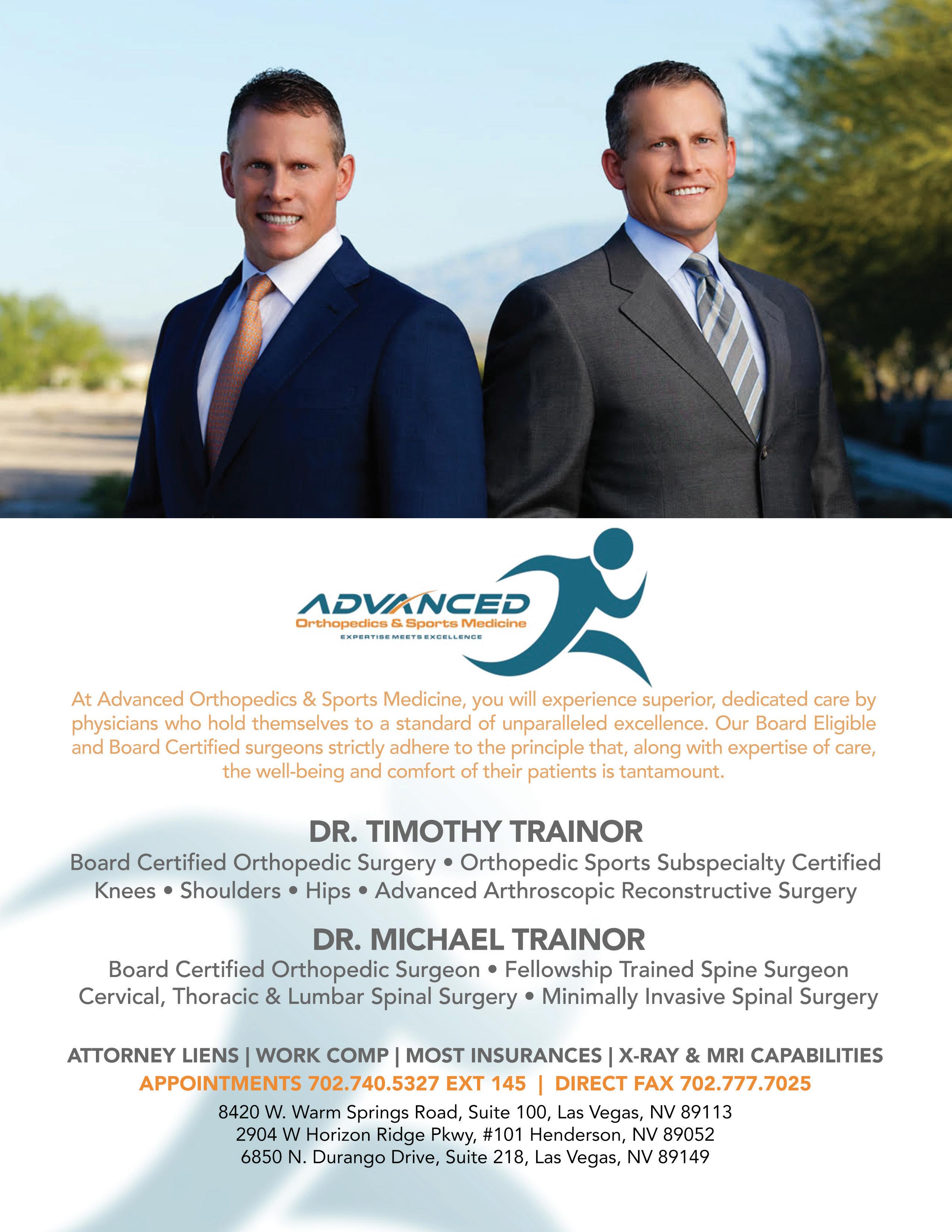



(702) 489.9000 Fax: (702) 489.9001 www.lvcardiology.net (702) 254-5004 Fax: (702) 432-4005 www.lvradiology.com CHEST X-RAY EKG ECHOCARDIOGRAM STRESS TEST Lexiscan Myoview Treadmill Myoview Dobutamine Myoview YOU CAN NOW ORDER PRE-OP CLEARANCES AVAILABLE RENDERINGS Knees Shoulders Spine - Cervical - Thoracic - Lumbar BENEFITS FOR ATTORNEYS No upfront cost Clear demonstration of the injury Can be used to assist in settling claims with adjusters, arbitrators, mediators, or juries Settle faster & more efficiently Client satisfaction 3D MRI RENDERINGS 3D MRI RENDERINGS PRESENTS Tomorrow’s Radiology Imaging Today...
LIFESTYLE


“Vision without traction is merely hallucination.”
- Gino Wickman
FORMULA 1
A Quick Look at the Fastest Race in the World
By Don Logay
FORMULA
1 racing is coming to Las Vegas. You’ve heard about it, you probably know it will take place on the Strip and may even recall it will be sometime in November. But beyond this, most know very little about FORMULA 1 racing, the cars, the track and/or why it is so popular worldwide.

However, once you know more about the fastest open-wheel race cars in the world and how they will be roaring down the iconic Las Vegas Strip at 210 mph – speeding though tight turns and flying past famous hotels and casinos – you’ll better understand why FORMULA 1 (or F1) is considered the most famous and prestigious motor sport competition on the planet.
Who knows, with just a little more information and insight, you just may become an aficionado... and one of its 500 million global fans.
Big Picture Stuff
Modern FORMULA 1 racing began in 1946 with the Fédération Internationale de l’Automobile’s (FIA) standardization of rules and was based on earlier European Championships of the 1920s and 30s... and today, it is called “Formula One Automobile Racing” because it is just that.
It is based on a precise set of formulas and specifications for just about everything – for the cars, the track, the drivers, the times – basically everything.
It starts with a grueling schedule of races spanning nine months and spread all around the world. The 2023 schedule begins March 5th in Sakir, Bahrain and ends November 26th in Abu Dhabi United Arab Emirates. This year’s series will visit 20 countries on five continents, with
74 | VEGASLEGALMAGAZINE.COM
Courtesy F1 Las Vegas Grand Prix
three races in the United States (Miami, Austin, Texas and Las Vegas) – more than any country globally – and representing a significant step in a new long-term ten-year commitment.
We also learn a classy new word: penultimate... which means second to last, as Las Vegas is scheduled as race number 21 in this year’s 22race line-up.
Sound exciting? Probably not...yet... but here’s where it gets interesting.
Welcome to Las Vegas
“The city of Las Vegas is the world’s arena,” notes Las Vegas Mayor Carolyn G. Goodman. “From our Stanley Cup champion Golden Knights and WNBA champion Las Vegas Aces to the Raiders, boxing, MMA and NASCAR, we are known as a top sports destination. It is only natural that we add outstanding additional events such as F1.”
The FORMULA 1 HEINEKEN SILVER LAS VEGAS GRAND PRIX 2023 (proper name) is the muchheralded return of FORMULA 1 racing to Las Vegas since two smaller Grand Prix events were held 41-years ago at Caesars Palace in 1982.
This time around (literally), the race will be on the streets of Las Vegas with a 3.8 mile course starting at the new 300,000 square-foot permanent F1 Paddock Club™ complex and Pit Row at the corner of Harmon and Koval.
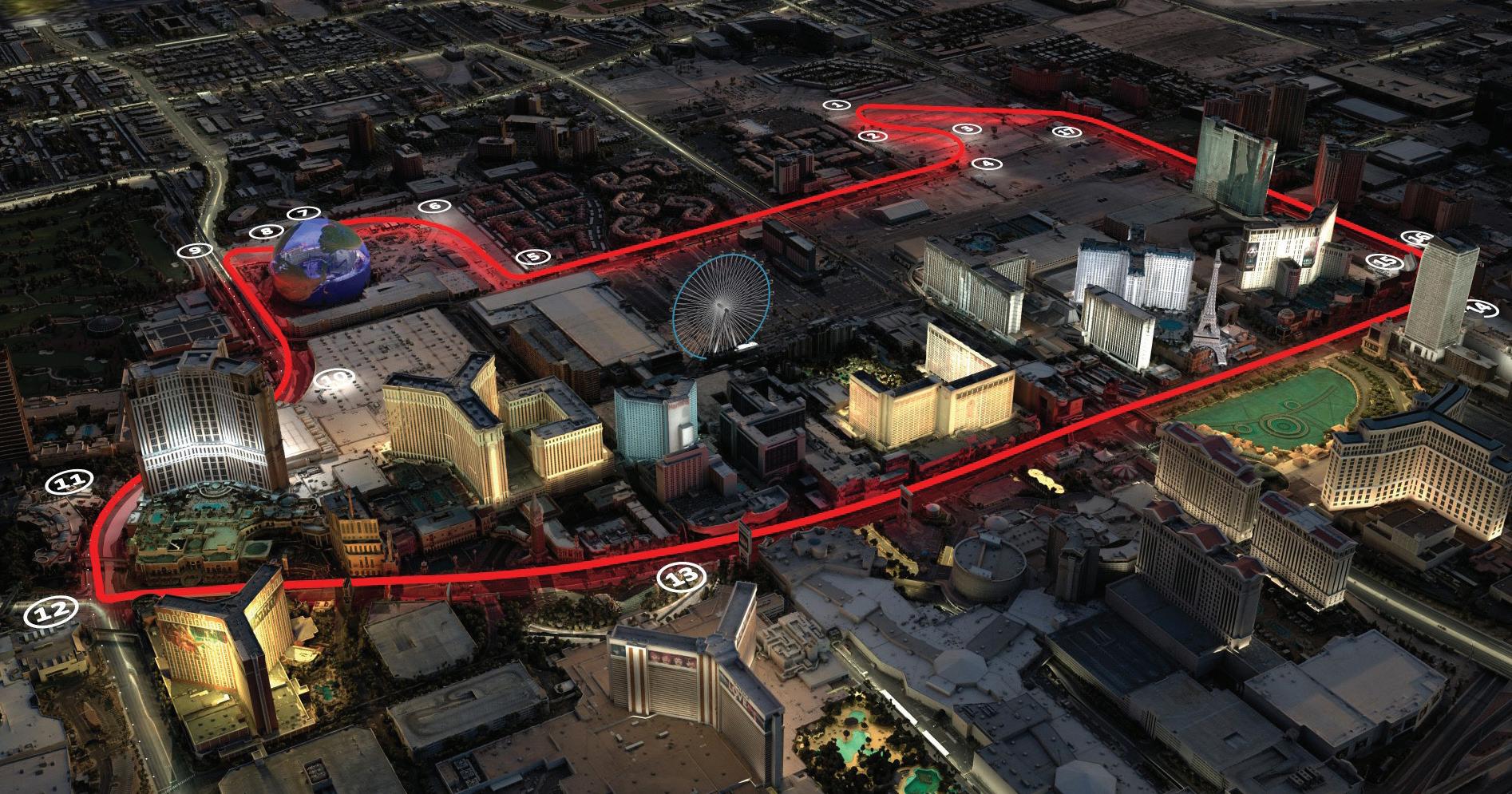
There will be 50 laps through 17 treacherous tight turns... and while a FORMULA 1 course can be run in either of two directions, the Las Vegas race will be run counterclockwise with left-hand turns – in traditional American style –versus clockwise with right-hand corners as in the majority of European races.
While there is no drop of a green flag, as in NASCAR, a row of overhead green lights will signal the start. A deafening roar of powerful engines will send the race cars speeding North on Koval toward and around the new MSG Sphere, through tight turns onto Sands Avenue an then into the hi-speed 1.9 mile straight away – where cars will reach speeds of 210 mph or more past famous Vegas hotels and casinos, like Treasure Island, The Mirage, Caesars Palace and Grandstands for 18,000 in front of the Bellagio fountains – then a quick turn onto Harmon Avenue and back to the Paddock Club and start/finish line.
Track is 3.8 miles with 17 turns and 210-plus mph straight away on Las Vegas Blvd
Courtesy F1 Las Vegas Grand Prix East Harmon and Paddock Club / Courtesy F1 Las Vegas Grand Prix
Fastest Race Cars in the World
FORMULA 1 race cars are an amazing combination of state-of-the-art-engineering, cutting edge technology, creativity, daring design and deep, deep pockets.
Basically, the cost for a FORMULA 1 race car in 2023 is somewhere around 12 to 15 million dollars. The build itself is pricey and akin to your putting a car together one piece at a time out of a dealer’s parts department.
Engines are the most expensive component, with a custom turbocharged 1.6 litre V6 costing about 1.5 million. Teams will use about three per season. The Chassis (or frame it’s built on) costs around $700,000, a custom-built Gearbox (like your transmission) is $300,000 and the aerodynamic Front and Rear wings – that press the car down onto the track and allow it to negotiate hi-speed turns – is another $250,000.
Then there is the steering wheel, an extremely personalized, complicated, closely guarded conglomeration of buttons, switches and gizmos that rival the cockpit of a jet fighter... all squeezed onto a tiny centrally-located steering device. With the touch of a finger, drivers control everything from shifting and braking to traction and balance. There’s also a vast array of warning lights, sensors and digital displays noting engine status to avoid mechanical failures – along with paddle shifters, radio controls and even a push button that provides an automatic hands-free drink for the driver. Cost: about $50,000.
Add hi-tech hydraulics, space-age brakes (which glow orange at 1,832 degrees around the turns) and a super-safe fuel tank and you’ve got a price tag zooming skyward.
But wait there’s more
The car itself is just for starters. Then there are the drivers, pit crew, add-on items and logistics.
The 2023 race circuit will feature 10 teams with two cars per team for a total of 20 cars and drivers bringing the cost of cars alone to about 300 million.
In addition to hiring a team of world-class drivers and a top-notch pit crew – and getting them to 22 cities around the world plus housing – there is also the logistics and extra cost of shipping cars from race to race.
Even disposable items like tires are incredibly important. They are preheated to a precise temperature with electric blankets beforehand and all four can be changed in under three seconds. They are also insanely expensive. A single set of four special F1 tires costs about $2,700 and a typical 3-day race weekend uses 13 sets of tires per driver, costing over $35,000 per race and a whopping $700,000 expense per team per season.
When all is said and done, a sponsor can easily spend $150 million or more to compete in FORMULA 1 racing... and even a minor scrape, bump or ding can be very, very costly. A serious crash... devastating.
Lights, Camera, Action!
The full schedule spans four days – starting with a star-studded Opening Ceremony at the MSG Sphere on November 15th and F1 race events November 16th, 17th and 18th as follows.
Thursday, November 16
Practice 1 8:30 / Practice 2 12 midnight
Friday, November 17
Practice 3 8:30 / Qualifying 12 midnight
Saturday, November 18
F1 Evening Race 10:00 pm
Time-wise, the Las Vegas is one of the latest races on the 2023 schedule and all sessions will take place in darkness on the neon-drenched Vegas Strip course.
76 | VEGASLEGALMAGAZINE.COM
Las Vegas is another first for FORMULA 1 as well, in that the actual race is held on Saturday rather than Sunday, as is traditional with all other competitions worldwide. Why so? As a courtesy, promoters did not want to detract from America’s favorite sports pastime: Football. Very classy indeed.
This is also the “Entertainment Capital of the World,” and there is sure to be plenty of starstudded performances woven all throughout the entire schedule. “The Las Vegas Grand Prix is going to take F1 race weekends to the

next level,” stated FORMULA 1 CEO Stefano Domenicali (Autoweek 9/22), “Staging an F1 Grand Prix in the Sports and Entertainment Capital of the World allows us to plan a truly spectacular celebration that has never been seen in our sport before.”


Plan B: Must See TV
It is likely you and I will not be purchasing a ticket for this event for two reasons: (1) General admission is totally sold out and (2) Other prices are astronomical. Even the most affordable
West Harmon Zone / Courtesy F1 Las Vegas Grand Prix

 Sports Illustrated viewing balcony / Courtesy F1 Las Vegas Grand Prix
Private skybox / Courtesy F1 Las Vegas Grand Prix
Sports Illustrated viewing balcony / Courtesy F1 Las Vegas Grand Prix
Private skybox / Courtesy F1 Las Vegas Grand Prix
grandstand seats were going for thousands, and private skyboxes and super-duper premium VIP hotel “Room, Dining, Special Event and Race” packages range from tens of thousands upwards into the you-name-it stratosphere... and these too (believe it or not) are pretty much sold out. We told you... it’s a popular race!
But we are all in luck, as the race is scheduled to be aired commercial free on ESPN and possibly ABC... as well as streamed on a host of venues... with anticipated U.S. viewership well over a million and a total global TV audience of nearly two billion.
Live from Las Vegas...it’s Saturday Night!
You now know a heck of a lot more about the FORMULA 1 HEINEKEN SILVER LAS VEGAS GRAND PRIX 2023 than you did before... and what makes it so special.
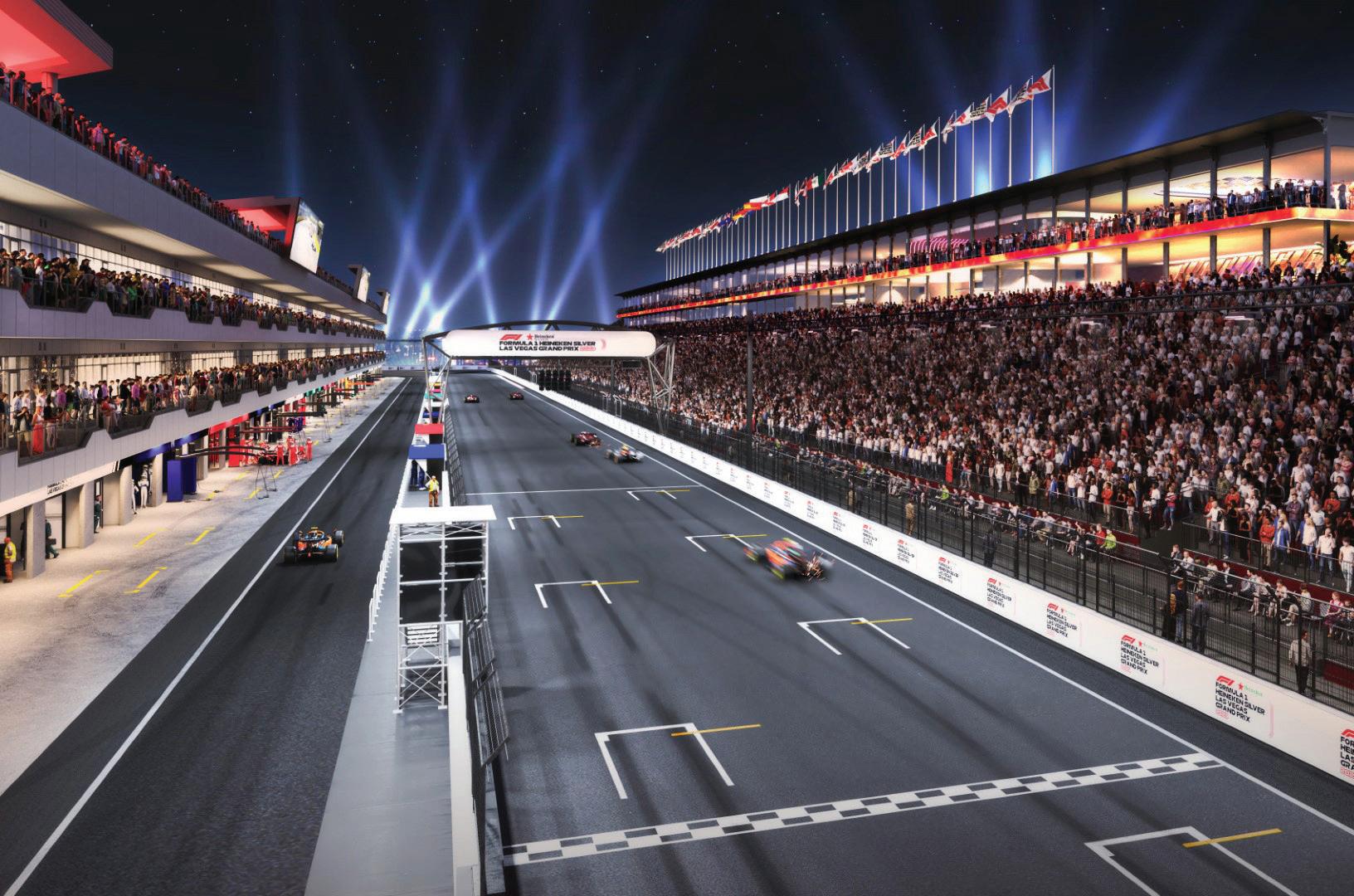
So, if you’re out and about, watching at a sports bar or casino, you can add fascinating personal commentary to each and every turn and straight away... or if at home, you can put on your pajamas, make some popcorn, grab a beer and impress others with your amazing intricate knowledge of all things FORMULA 1.
You now know just enough to either be the smartest person in the room... or a totally annoying know-it-all. Who cares? You just may become a fan too.
Fasten your seatbelt. It’s race time in Vegas!
Don Logay is an award-winning journalist and former Editor-in-Chief of three national magazines. Today he writes luxury lifestyle articles for numerous publications. He can be reached at (949) 240-4444 or press@donlogay.com.
West Harmon Zone
Courtesy F1 Las Vegas Grand Prix
By Myron G. Martin, President and CEO, The Smith Center

Thankyou to Vegas Legal Magazine for allowing me the opportunity to share updates about the Smith Center through the last few years. Looking back, I’ve been able to keep you apprised of changes to secondary ticketing laws, and given you updates about upcoming shows and other significant milestones.
In the eleven years since the Smith Center opened on March 10, 2012, a lot has changed. The Symphony Park area is becoming a neighborhood with residential, retail, and restaurants. Our neighbors at the Lou Ruvo Center for Brain Health are doing great work on the front line of Alzheimer’s research. The residential offerings are growing tremendously in the neighborhood with the folks at Auric adding not only an additional 5 story apartment building but a midrise residential building as well. We’re hearing lots of stories about potential food and beverage offerings, and even a boutique hotel in the works.
Looking back, the pandemic was hard on all of us. I agree with those who say that we will never get back to what we had before, or we will never get
back to “normal”. We will, however, get to a new place where we celebrate the “new now.” A place where people once again respect each other, where Karen’s no longer rule the world, and where people look forward to going to work (remember back when people went to their place of employment and took care of business with the help of their colleagues who offered help at the water cooler?). The Smith Center was challenged like other businesses but followed the rules at every turn. We still have some people who are mad at us for practicing policies recommended by the Governor and the CDC, but most people know that we had not only our guests, but our performers and our employees on the top of our minds as we made the difficult decisions to close. When we were able to reopen, we did so using the best scientific advice which included requiring vaccine cards and masks. We were so happy to open our doors that we didn’t want to do anything to jeopardize our future. While we were thrilled to be able to welcome our team back, and then as a group to welcome back our guests, we were more than a little bit nervous about the process. While in some ways it seems like this was years ago, we
80 | VEGASLEGALMAGAZINE.COM
will never forget the challenges created by the pandemic.
More importantly, I will never forget the overwhelming public and private support The Smith Center received. This support made it possible for us to reopen successfully.
And I was totally moved by the joyous crowds that showed up night after night once we were open. It was touching to see so many happy faces on people who missed having shared experiences at The Smith Center. People were enthusiastic and inspired. Yes, there were a few Karen’s along the way. But nearly everyone was thankful, joyous, and on their best behavior.
Why am I taking the time to acknowledge this period in our history? Because I hope that we all can learn from it. Looking back to a time when we were all locked down, it is easy to see why everyone was so grateful to be able to get out again. People, who may have taken live entertainment experiences for granted, were thrilled to be inspired once again by live music. Patrons, who wrongly assumed that there would always be plenty of people to keep restaurants

and other public assembly facilities working were so happy to see their favorite bartenders from the Culinary Training Academy making their favorites at The Smith Center. All of these people are thanking ushers, ticket takers, and parking attendants. They are taking the moment to say that they we missed and appreciated. I think we are all thankful to get back to our favorite music, theater, sports, dining venues.
As we recall the past, and think about our most recent days, I want to say thank you to everyone who made The Smith Center part of their return to public life. We missed you so much and could not be happier about having houses full of cheerful people. This may not be “back to normal” but our new reality may be even better. Let’s all take a moment to be thankful for the good things that are part of our “new now”. Our city is amazing. Since we can’t live in the past, and since tomorrow is not promised, our now is the best thing we’ve got. Enjoy the moment. And if haven’t been here lately, come join us. We look forward to seeing you and celebrating the delights of live entertainment. Life is good!
By Don Logay
The word first has many meanings. Mister Webster offers dozens of definitions, which range from noting time and the order of things (as in historically) or a given rank (as on a list or finish in a race) to a class or position (first grade and first base) and ultimately to being a “first ever” monumental something or accomplishment... with many sub-variations in between.
With that said, it is interesting to note that –from shrimp cocktails to the atomic bomb – Las Vegas fits nearly every one of Mister Webster’s broad range of definitions... yesterday, today and tomorrow.
Time and the Order of Things

In the yesterday department, Vegas has many interesting historical firsts of its very own. It was first put on the map – literally – by explorer John Charles Fremont who was charting the Wild West for the U.S. Government in 1844. He camped one night by a spring the natives called “Las Vegas.” He noted it on his map of the area which later showed Las Vegas as a place to camp for settlers heading West.
Vegas Firsts
Yesterday, Today and Tomorrow
Sixty year later, it was still just a dusty water-stop for passengers heading West aboard William Andrews Clark’s “San Pedro, Los Angeles and Salt Lake” railroad line – until 1905, when Clark decided to subdivide the land around his train station into 1,200 lots and auction them off. It was the “first” that officially created the City of Las Vegas and, to this day, the surrounding county bears Clark’s name.
Hotel Nevada (now the Golden Gate) purchased 1 Fremont Street for $1,750 and was the first hotel & casino in Las Vegas. It also had a few firsts of its very own. Room and board for its 10 first-class rooms was $1 per day offering electric lights, steam heat and soon the city’s very first telephone... a 1907 Kellogg with an easy-toremember phone number... 1.
The Golden Gate Hotel & Casino continued trendsetter history by also introducing the first Shrimp Cocktail (as we know it today) for 50-cents in 1959. After 117-years, and to this day, Golden Gate Hotel & Casino still operates at 1 Fremont Street.
82 | VEGASLEGALMAGAZINE.COM
Vegas Baby – On a Roll
It wasn’t long before Las Vegas “firsts” – both big and small – were a regular thing. In 1931, Nevada was the first state to legalize gambling... a big boom for Vegas and Reno... and soon, things that happened in Vegas... didn’t necessarily stay in Vegas.
Today’s Blackjack is a good example. In the 1930s, local casinos introduced a special promotion for the French card game “vingtet-un” (or 21). Players were rewarded an extra 10-to-1 odds if their “21” paired a black Jack of

Clubs or Spades with an Ace of Spades. Over the years, the “Blackjack” promotion faded away... but our purely Vegas name-of-the-game continues on worldwide to this day.
In 1931, Nevada legislature also established a speedy six-day legal residency... a unique first for anywhere, making Las Vegas the mecca for “quickie” marriages, and conversely, the divorce capital of the world (which also continues to this day).
Other notable Vegas historical firsts (big and small) include the first Hotel/Casino on Hwy 91, now the Strip (El Rancho 1941), first Atomic Bomb tests (1951), and the first topless Showgirls (Minsky’s Follies 1957) forever linking Showgirls as the iconic symbol of Las Vegas tourism. A rich history indeed.
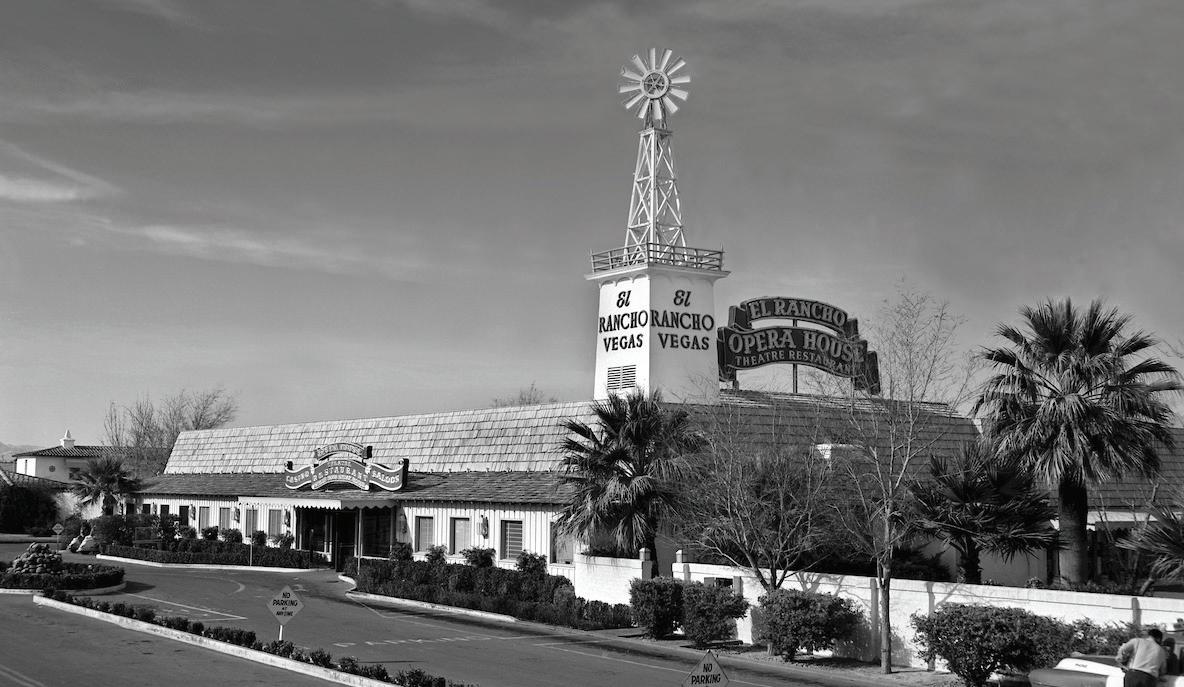
Today We’re Number One
Another of Webster’s definitions for first is “a given rank” (as on a list or finish in a race).
Today, Las Vegas is ranked number one in many categories. While far smaller than other
El Rancho Vegas - First Strip Hotel & Casino 1941
U.S. major cities... New York (18.9 million), Los Angeles (12.5 million) and Chicago (8.9 million) for example... the Las Vegas metro-plex with only 2.2 million local residents is rated as one of the world’s top tourist destinations with over 40 million visitors annually. The city also offers over 156,000 hotel rooms and seventeen of the top twenty biggest hotels in the U.S. of which, fifteen are ranked as the largest in the world.
In addition, for 26 years, Las Vegas has been the undisputed number one first choice destination in the United States for trade shows and meetings of all size. The Las Vegas Convention Center, created in 1959, is today one of the busiest facilities in the world. Over two million attendees pass through its doors annually into 4.6 million square-feet of exhibit space to walk 2.5 million feet of trade show aisles.

For many decades, Las Vegas has also been ranked first as the Entertainment Capital of the World, with a history of superstars and megaperformers appearing in residency – from Liberace, Elvis and Sinatra’s Rat Pack to Celine, Adele and Wayne Newton – to name but a few of the famous entertainers that earned Vegas this recognition.
Vegas is also well on its way to another first. Being crowned the Sports Capital of the World, as well... with a number of major league professional home teams – Vegas Golden Knights (Hockey), Raiders (Football), Las Vegas Aces (WNBA Basketball) – and both major league Baseball and NBA Basketball franchises looming on the horizon. Vegas also offers fans the spectacular Allegiant Stadium (65,000 seats) and T-Mobile Arena (20,000 seats) with even more world-class major sporting events coming to town, such as FORMULA 1 Racing in November and Super Bowl LVIII next February.
 Las Vegas Convention Center
Photo courtesy Las Vegas News Bureau / LVCVA
Frank Sinatra and the “Rat Pack” at the Sands, Las Vegas January 20, 1960
Photo courtesy Jerry Abbott / Las Vegas News Bureau
Las Vegas Convention Center
Photo courtesy Las Vegas News Bureau / LVCVA
Frank Sinatra and the “Rat Pack” at the Sands, Las Vegas January 20, 1960
Photo courtesy Jerry Abbott / Las Vegas News Bureau
And if that’s not enough, list-wise, the millions of lights on the famed Las Vegas Strip are ranked first as the brightest place on Planet Earth as seen from outer space.

Vegas Firsts of Tomorrow
Perhaps the most impressive of Mister Webster’s definitions are those things which are a “first ever” monumental endeavor or accomplishment... and Las Vegas is making its mark here as well.
The incredible “MSG (Madison Square Garden) Sphere” at the Venetian is a monumental one-ofa-kind world first. A massive black globe – 366 feet tall and 516 feet wide – sits quietly during the day and has an intriguing and mysterious presence on the Vegas skyline... until nightfall, when it bursts into amazing brilliant visuals that rival the lights of nearby famed hotels and casinos.
Statistically, it is the world’s largest spherical structure. The exterior has 1.2 million small circular LEDs covering the entire 360-degree 580,000 square-foot surface and can be programmed to be anything imaginable. The interior seats 18,000 and has a 250-foot screen that surrounds the audience along with 1,600 speakers and hitech immersive seats that vibrate, create wind, adjust temperatures and waft scents into the air. It is billed as an entertainment-only venue for live performances and cinematic spectaculars. Small ring sports (boxing and martial arts) are also possible.
The MSG Sphere amazed onlookers when it first sprang to life at 9:00 pm on July 4th with a dazzling light show of captivating images that ranged from fireworks and the Stars & Stripes to Planet Earth, the Moon, a massive Halloween Pumpkin and a giant size Basketball, among many other fascinating visuals.
The amazing $2.3 billion MSG Sphere is the first of its kind anywhere in the world... with a second planned for the Stratford area of London, England... but only after a spectacular debut here in Vegas.

George Jetson-Style Ride
Another groundbreaking Las Vegas first the is the futuristic “Vegas Loop” underground transportation system being built by The Boring Company – a subsidiary of Elon Musk’s SpaceX Corp. Construction of a first-of-its-kind tunnel network began beneath the Las Vegas Convention Center in late-November 2019 to transport conventioneers between exhibit halls on the expansive 200-acre site. A second phase soon connected Resorts World to the convention Center as well. But these two were just a modest beginning.
They were simply firsts in a vast underground grid of 12-foot round tunnels. Initial planning called for two 14.5-mile long parallel tunnels (29 miles total) dug 40-feet beneath Las Vegas Boulevard running from Downtown to the Airport with 51
Las Vegas as seen from the International Space Station Photo courtesy NASA / Johnson Space Center
Courtesy Madison Square Garden Company / MSG Sphere Las Vegas
stops at casinos and the Stadium along the way. However, recent evaluation and planning has dramatically expanded the Vegas Loop network to 65-miles of dual tunnels with stops at 18 new locations (69 total) now also extending to East/ West Sahara Avenue, Chinatown and South down to Blue Diamond.
When completed, thousands of electric Tesla automobiles will whisk passengers, traffic-free, from point-to-point quickly and economically... with the Vegas Loop representing a first-of-itskind transportation solution for any city anywhere in the world.

But this is just the beginning. Planning is already underway for extensions throughout the Vegas Valley and Musk envisions a 270-mile tunnel to

Los Angeles... then on to other cities around the world. All of which, will have begun here first – on November 15, 2019 in a parking lot just off the Strip.
Las Vegas is a visionary city of “firsts” with an eye toward the future... and it will continue to be a premier city in the United States and a leader in Metropolitan technologies worldwide. There are many reasons why.
First...
Don Logay is an award-winning journalist and former Editor-in-Chief of three national magazines. Today he writes luxury lifestyle articles for numerous publications. He can be reached at (949) 240-4444 or press@donlogay.
Courtesy Madison Square Garden Company / MSG Sphere Las Vegas
Photo courtesy Las Vegas News Bureau / LVCVA
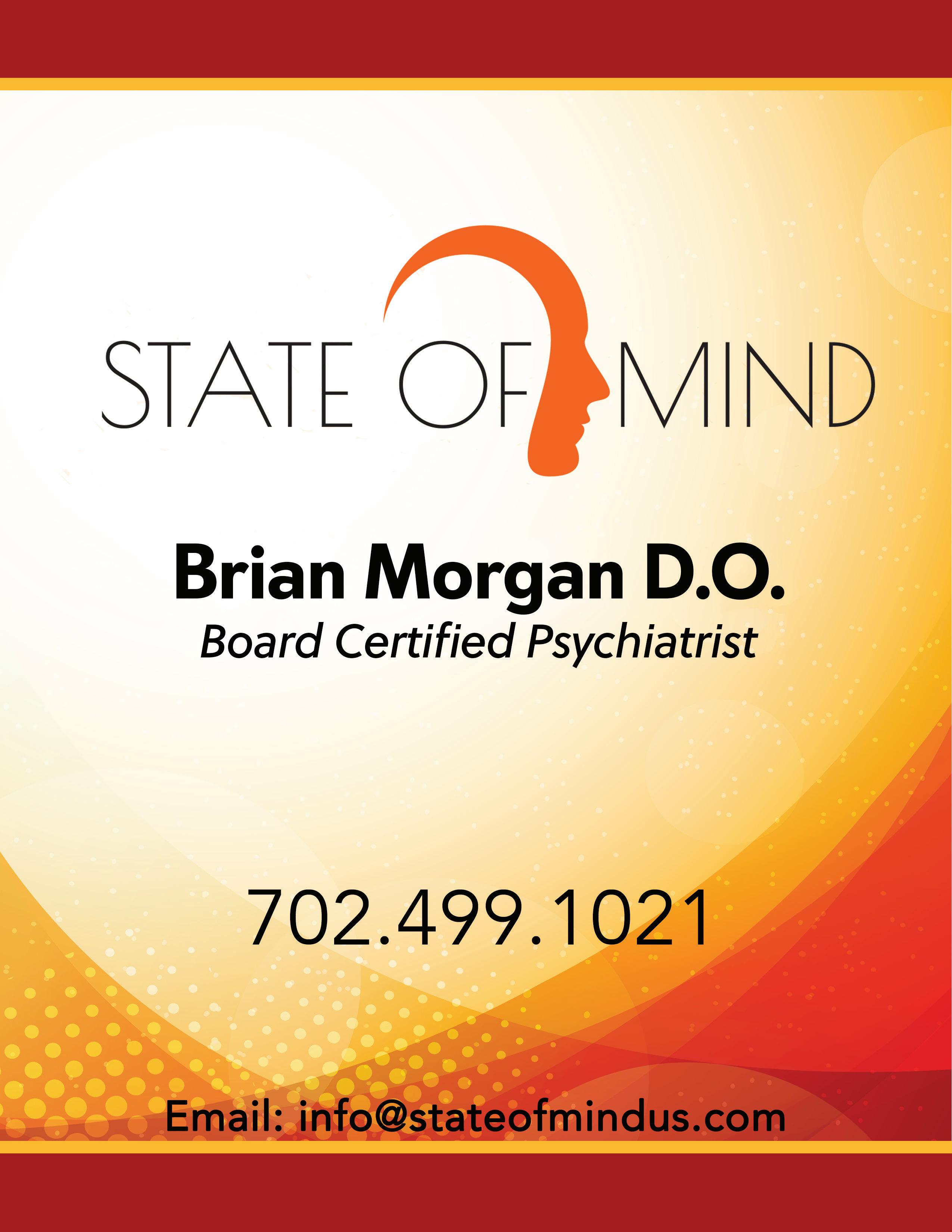
WHEN TO SEEK ORTHOPEDIC CARE
Written by Dr. Cash
There is no right or wrong reason to seek orthopedic care. Some basic guidelines to follow:
If you’re experiencing pain in your muscles, joints, or bones or you have problems with your joints, you may wonder whether to see a doctor. If you have any of the following symptoms, we recommend you make an appointment with your physician to be evaluated.

and months of it, you should strongly consider seeking professional help. You might want to also consult with an interventional pain management specialist.
3. Your Range Of Motion Is Becoming Limited.
Are your joints feeling tighter and tighter as the days go by? A limited range of motion can signify joint disease such as arthritis. It’s important to see a licensed specialist as soon as possible to prevent your condition from getting worse. You might also consider a physical therapy consultation.
Bone and joint discomfort is common in older people, but it should not inhibit your daily activities. If you struggle to perform simple tasks such as climbing stairs or walking your dog, you should see an orthopedist.
2. You Suffer From Chronic Pain.
Chronic pain is often defined as any pain lasting longer than 12 weeks. Experiencing a few days of discomfort is one thing, but after several weeks
4. You Experience Instability While Walking Or Standing.
Do you feel shaky or wobbly when performing basic functions such as standing, walking, sitting down or standing up? This is a sure sign that something is wrong with your joints. Your best option is to consult with a medical professional in order to determine the cause of your instability, and work on correcting it.
1. You Have Difficulty Performing Everyday Activities.
5. You Have Suffered A Soft Tissue Injury That Has Not Improved In 48 Hours.
Have you recently suffered from a soft tissue injury, such as a sprained ankle, twisted knee, or busted wrist? Is there pain and swelling that has not subsided within 2 days? If you have not noticed any major improvements after the first 48 hours, call a doctor and ask them for their earliest available appointment. You might also consider going to a local Urgent Care.
There are a number of medical specialties that treat musculoskeletal conditions, such as arthritis, chronic pain, and injury. Orthopedic doctors and surgeons, rheumatologists, neurologists, rehabilitation medicine doctors, and physical therapists all treat some conditions that relate to the muscles, bones, and joints. Once you’ve decided that you need to see a doctor, contact your primary care doctor to see if they have any recommendations or reach out to the Clark County Medical Society.


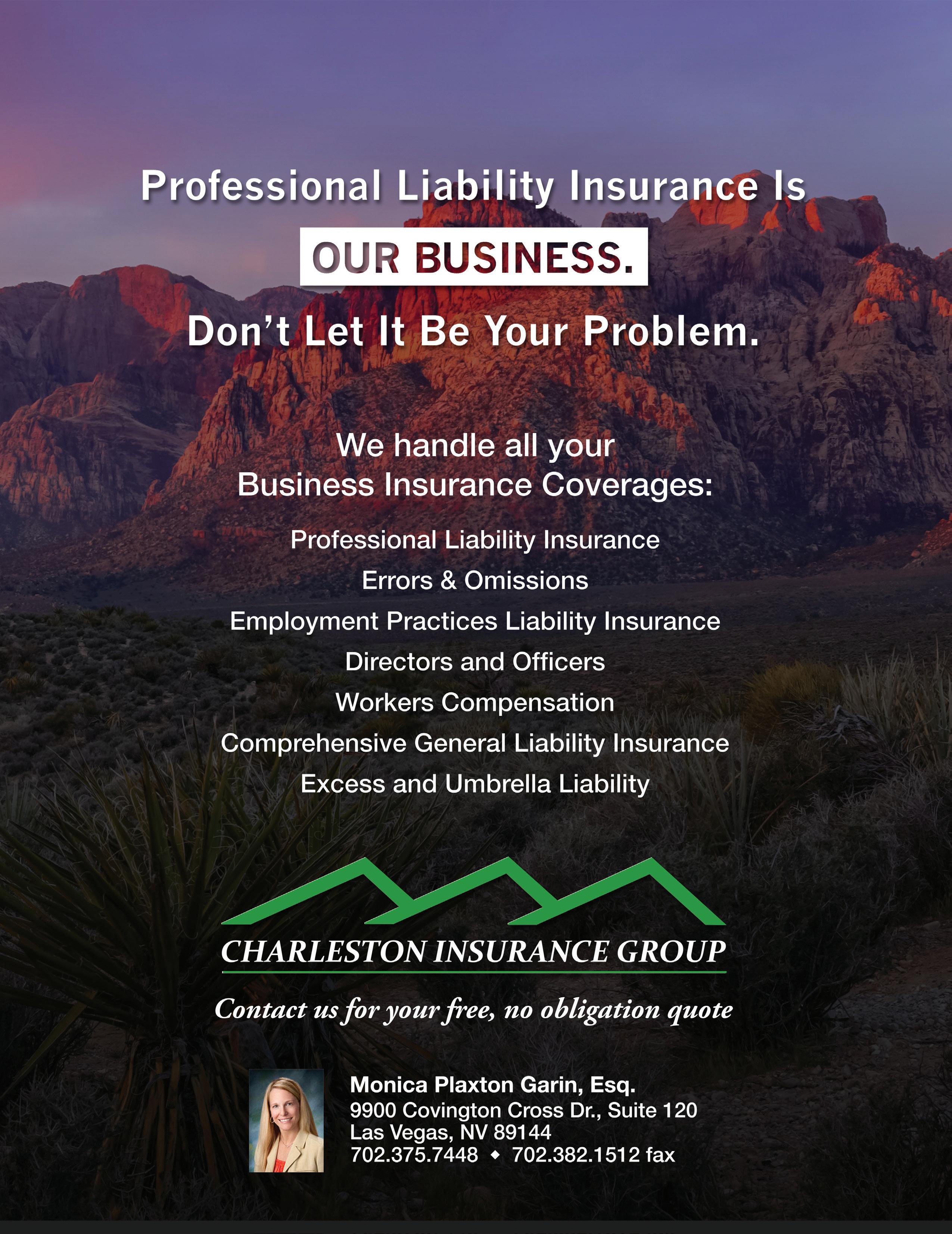
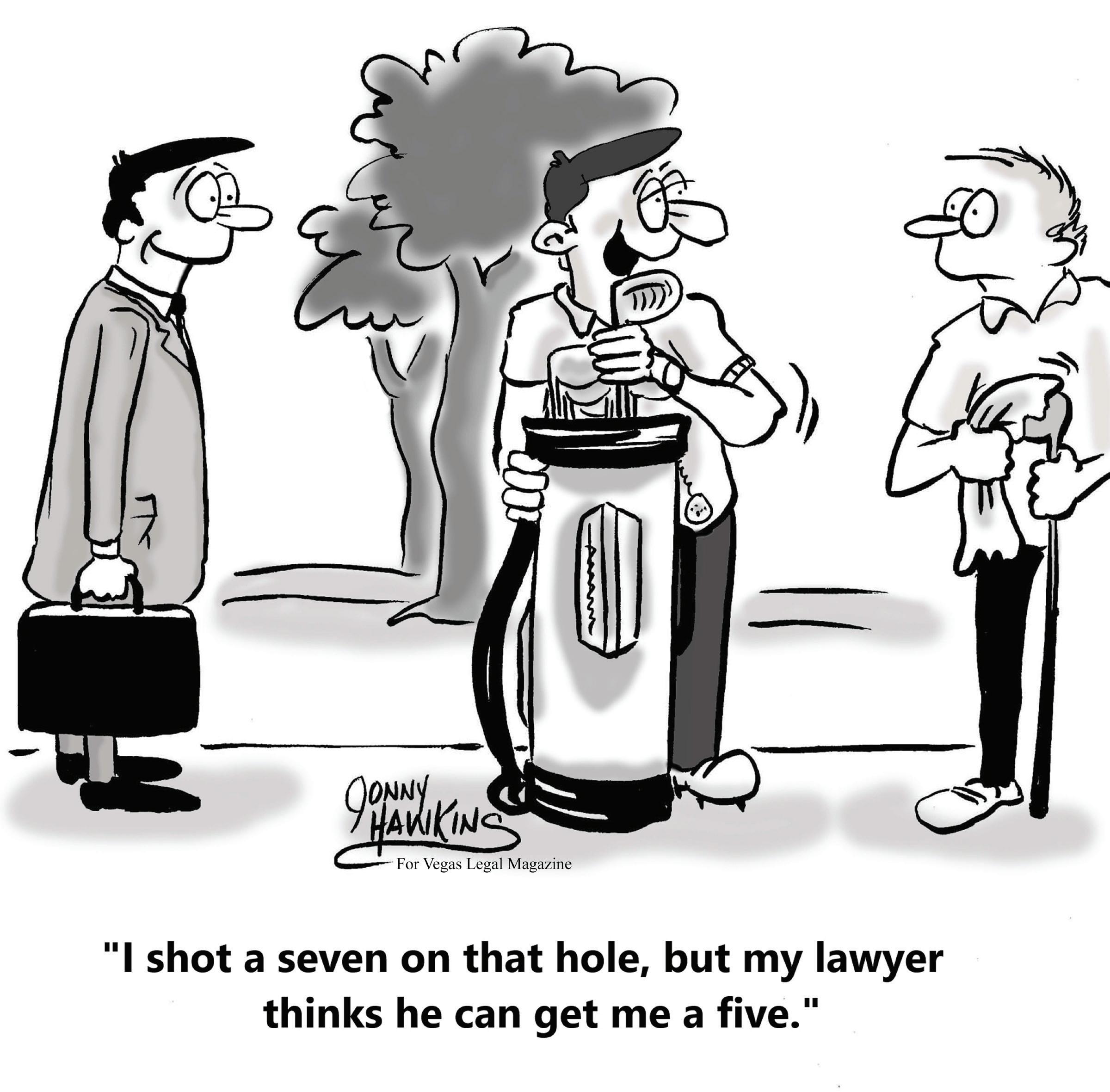
HUMOR



































 By: Josh Kasoff
By: Josh Kasoff








 Donald J. Campbell, Esq. CAMPBELL & WILLIAMS
Donald J. Campbell, Esq. CAMPBELL & WILLIAMS



























 Daniel
Daniel












































 Written By Donovan Thiessen, CPA
Written By Donovan Thiessen, CPA



 SEC
SEC















 Sports Illustrated viewing balcony / Courtesy F1 Las Vegas Grand Prix
Private skybox / Courtesy F1 Las Vegas Grand Prix
Sports Illustrated viewing balcony / Courtesy F1 Las Vegas Grand Prix
Private skybox / Courtesy F1 Las Vegas Grand Prix







 Las Vegas Convention Center
Photo courtesy Las Vegas News Bureau / LVCVA
Frank Sinatra and the “Rat Pack” at the Sands, Las Vegas January 20, 1960
Photo courtesy Jerry Abbott / Las Vegas News Bureau
Las Vegas Convention Center
Photo courtesy Las Vegas News Bureau / LVCVA
Frank Sinatra and the “Rat Pack” at the Sands, Las Vegas January 20, 1960
Photo courtesy Jerry Abbott / Las Vegas News Bureau










